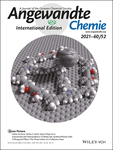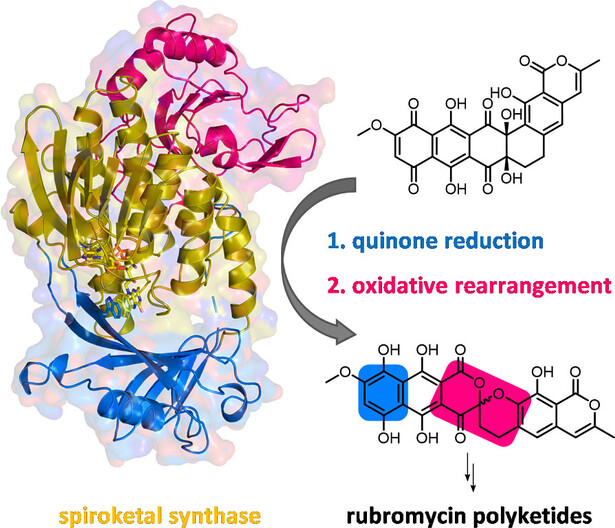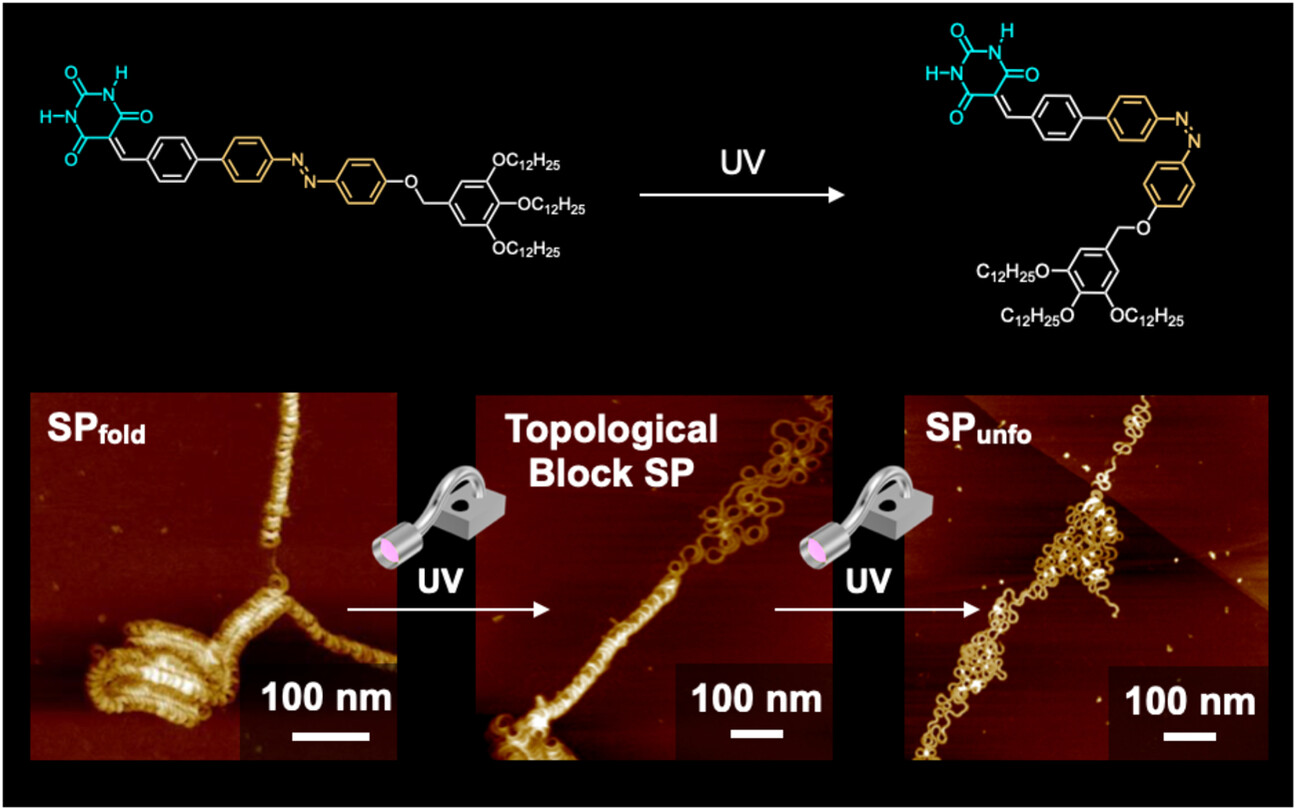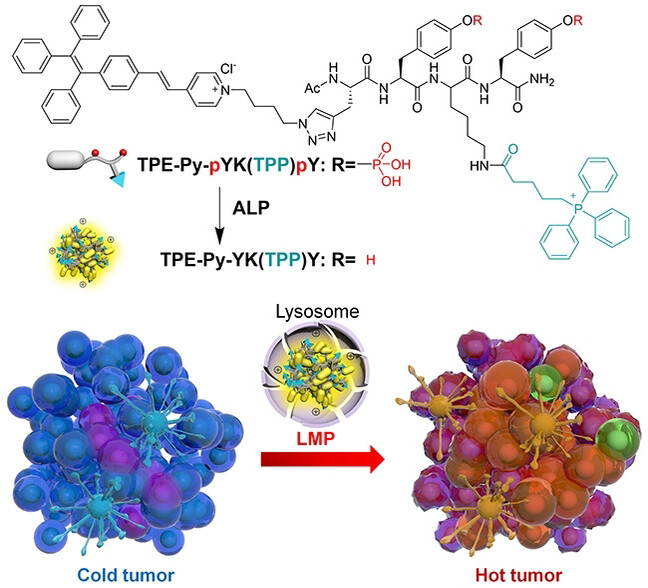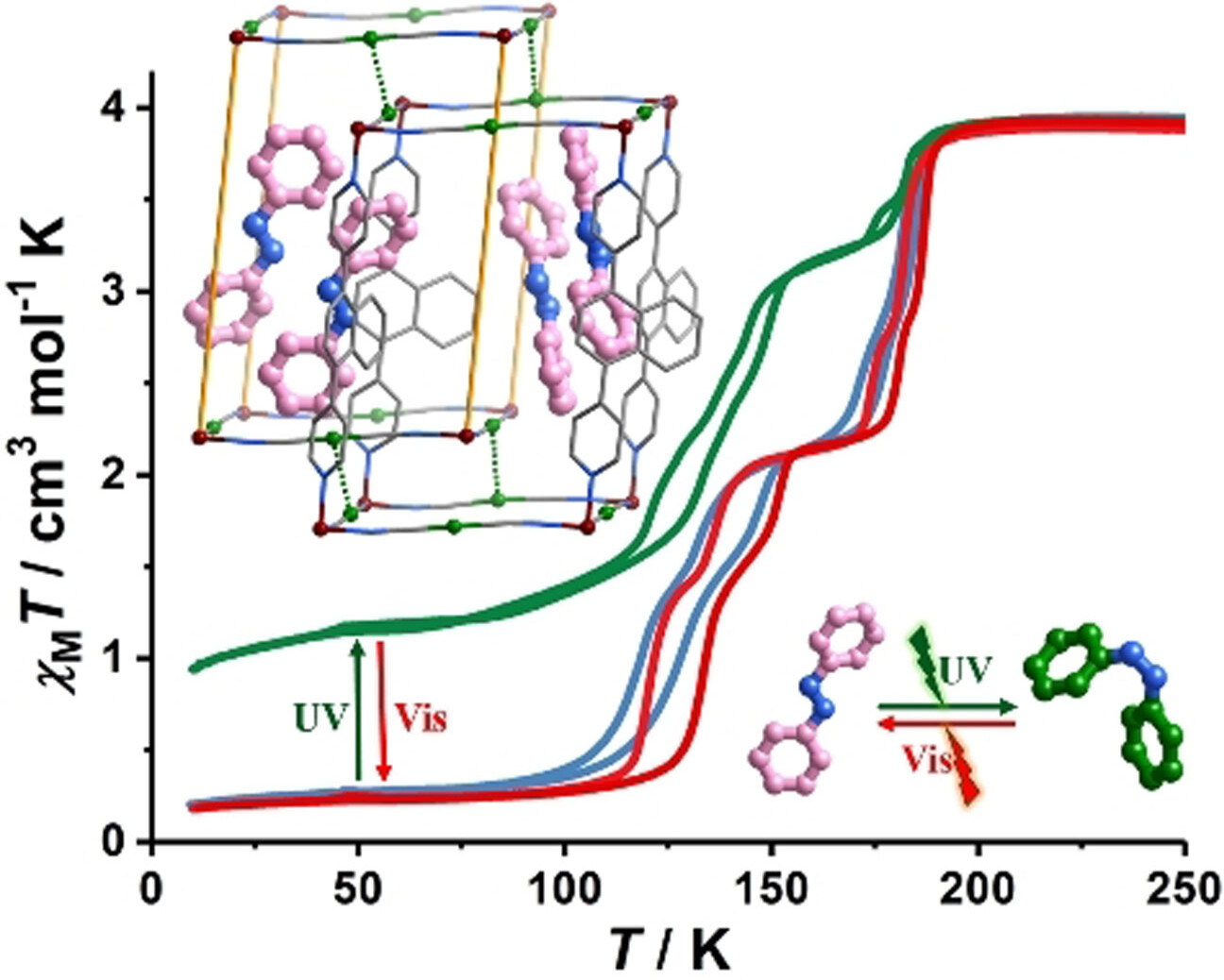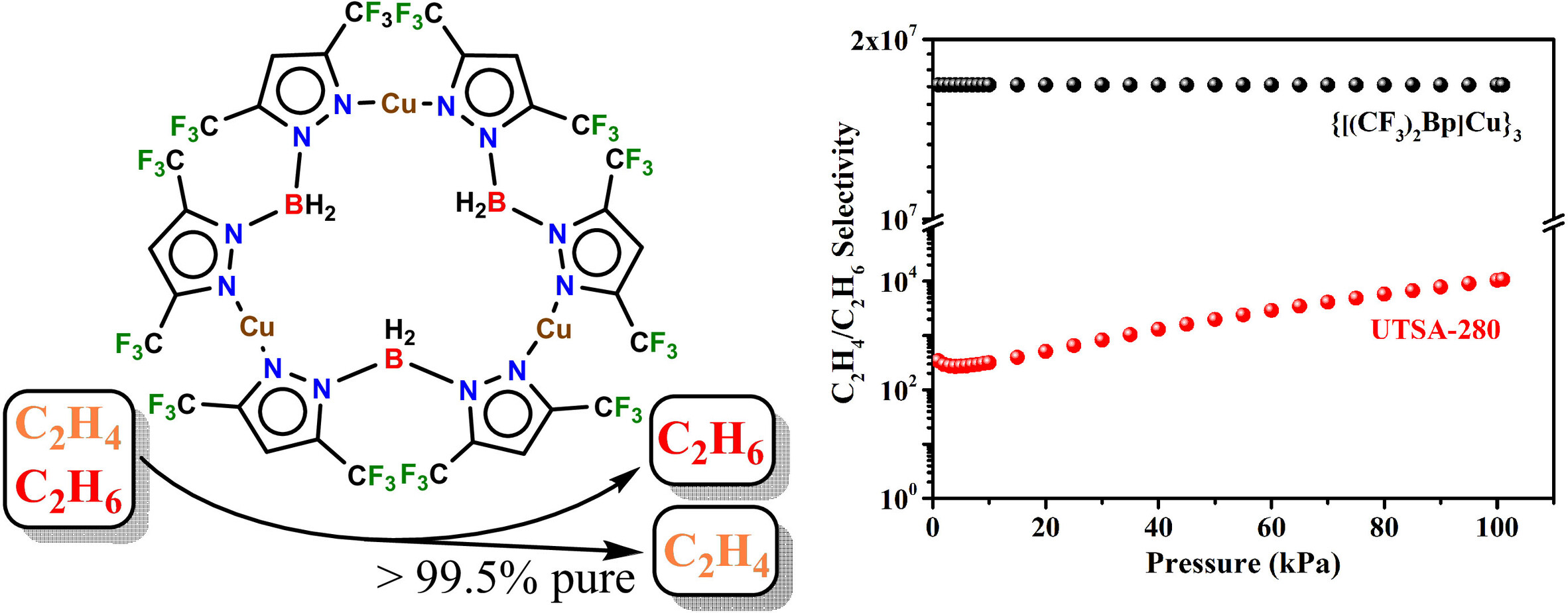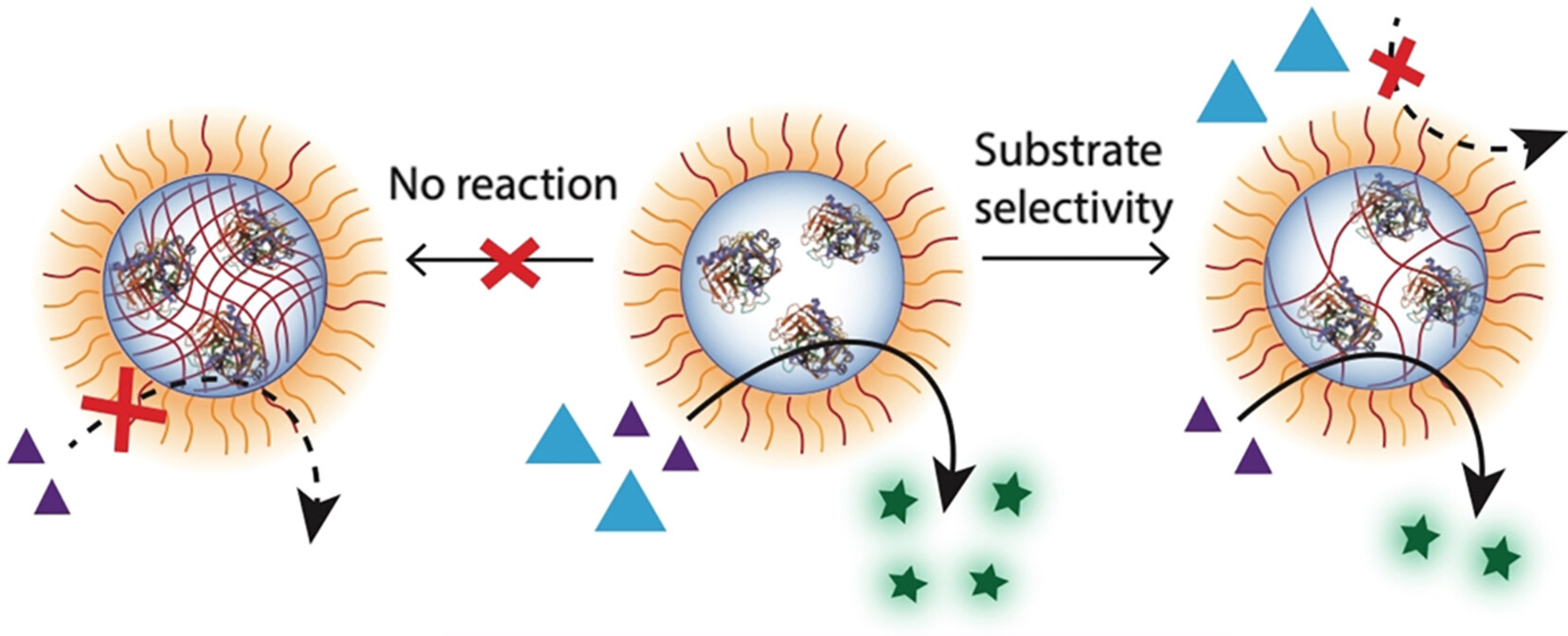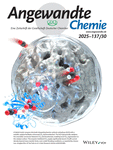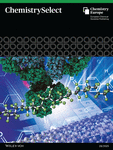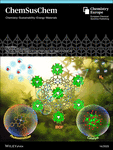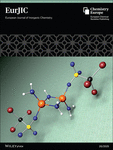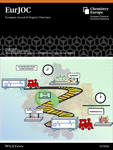Journal list menu
Export Citations
Download PDFs
Cover Pictures
Cover Picture: Supramolecular Nanopatterns of Molecular Spoked Wheels with Orthogonal Pillars: The Observation of a Fullerene Haze (Angew. Chem. Int. Ed. 52/2021)
- Page: 26869
- First Published: 08 November 2021
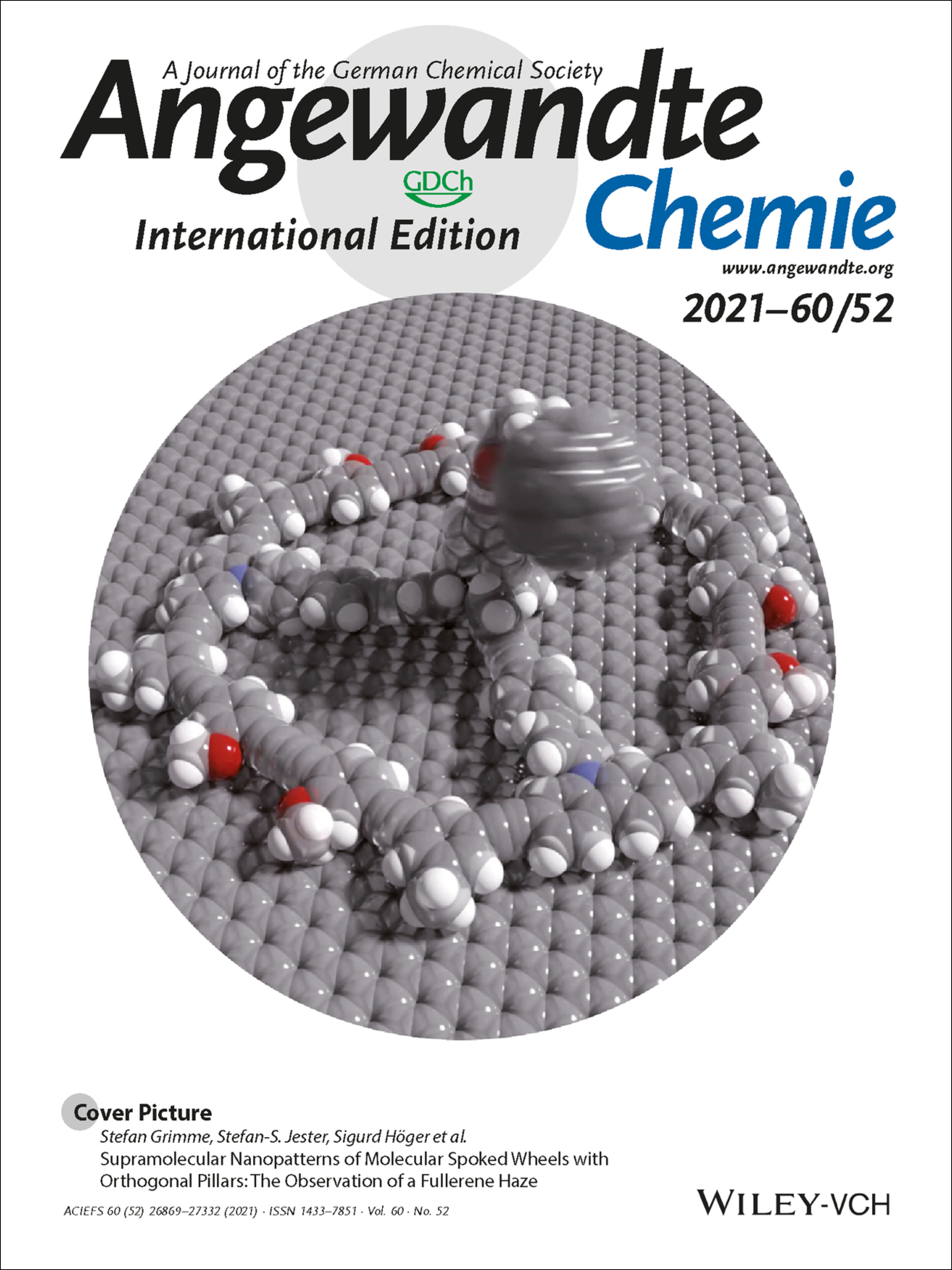
A modular synthetic approach paves the way to nanoscale platform molecules for supramolecular graphite surface patterns at the solid/liquid interface, studied by scanning tunnelling microscopy and simulated by GFN-FF calculations. In their Communication on page 27264, Stefan Grimme, Stefan-S. Jester, Sigurd Höger et al. show that the fullerene ester performs a tumbling motion that translates as a “haze” in the otherwise submolecularly resolved images.
Inside Cover: Magnetization Dynamics on Isotope-Isomorphic Holmium Single-Molecule Magnets (Angew. Chem. Int. Ed. 52/2021)
- Page: 26870
- First Published: 29 November 2021
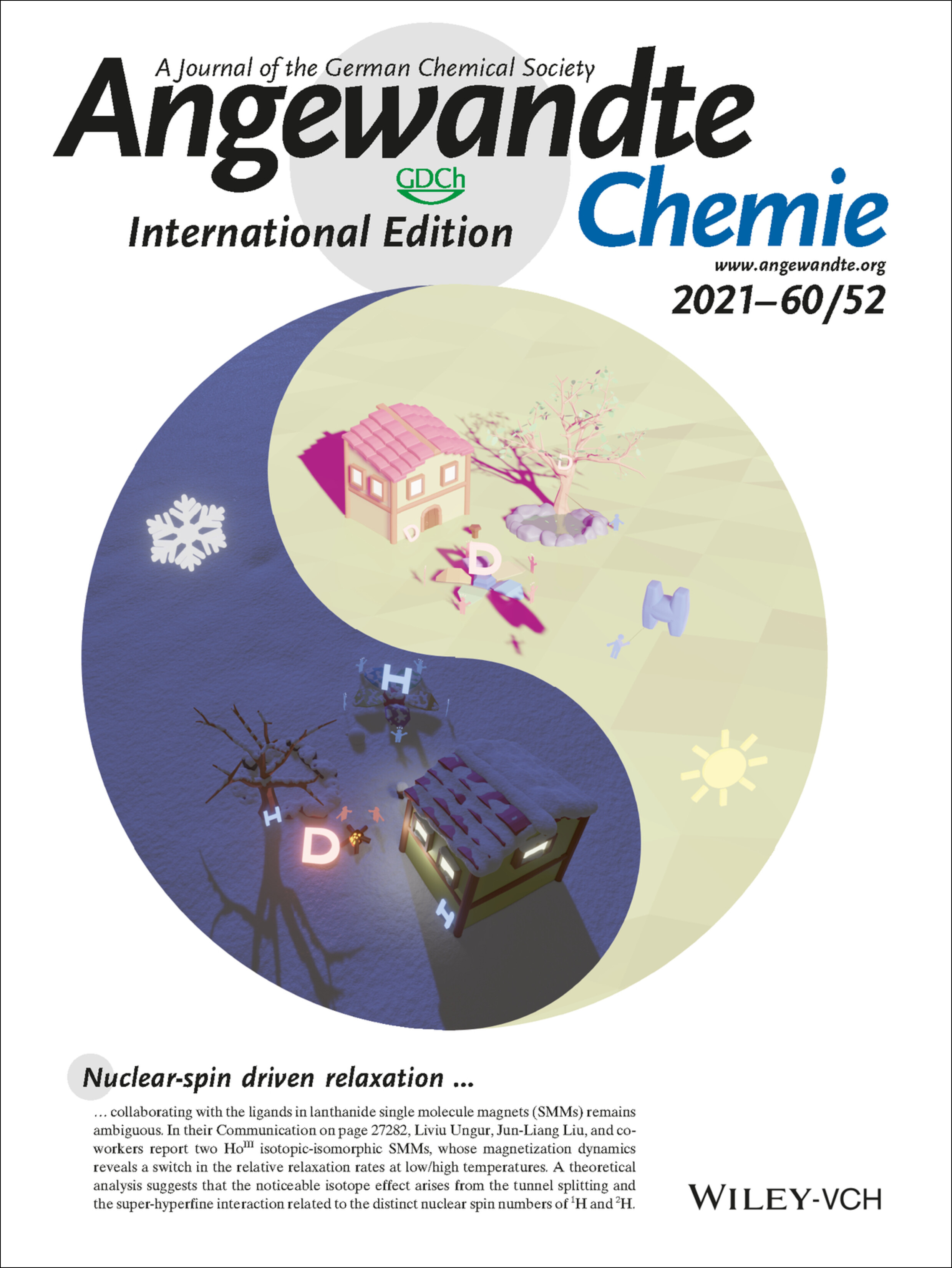
Nuclear-spin driven relaxation collaborating with the ligands in lanthanide single molecule magnets (SMMs) remains ambiguous. In their Communication on page 27282, Liviu Ungur, Jun-Liang Liu, and co-workers report two HoIII isotopic-isomorphic SMMs, whose magnetization dynamics reveals a switch in the relative relaxation rates at low/high temperatures. A theoretical analysis suggests that the noticeable isotope effect arises from the tunnel splitting and the super-hyperfine interaction related to the distinct nuclear spin numbers of 1H and 2H.
Inside Back Cover: Irradiation-Wavelength Directing Circularly Polarized Luminescence in Self-Organized Helical Superstructures Enabled by Hydrogen-Bonded Chiral Fluorescent Molecular Switches (Angew. Chem. Int. Ed. 52/2021)
- Page: 27331
- First Published: 29 November 2021
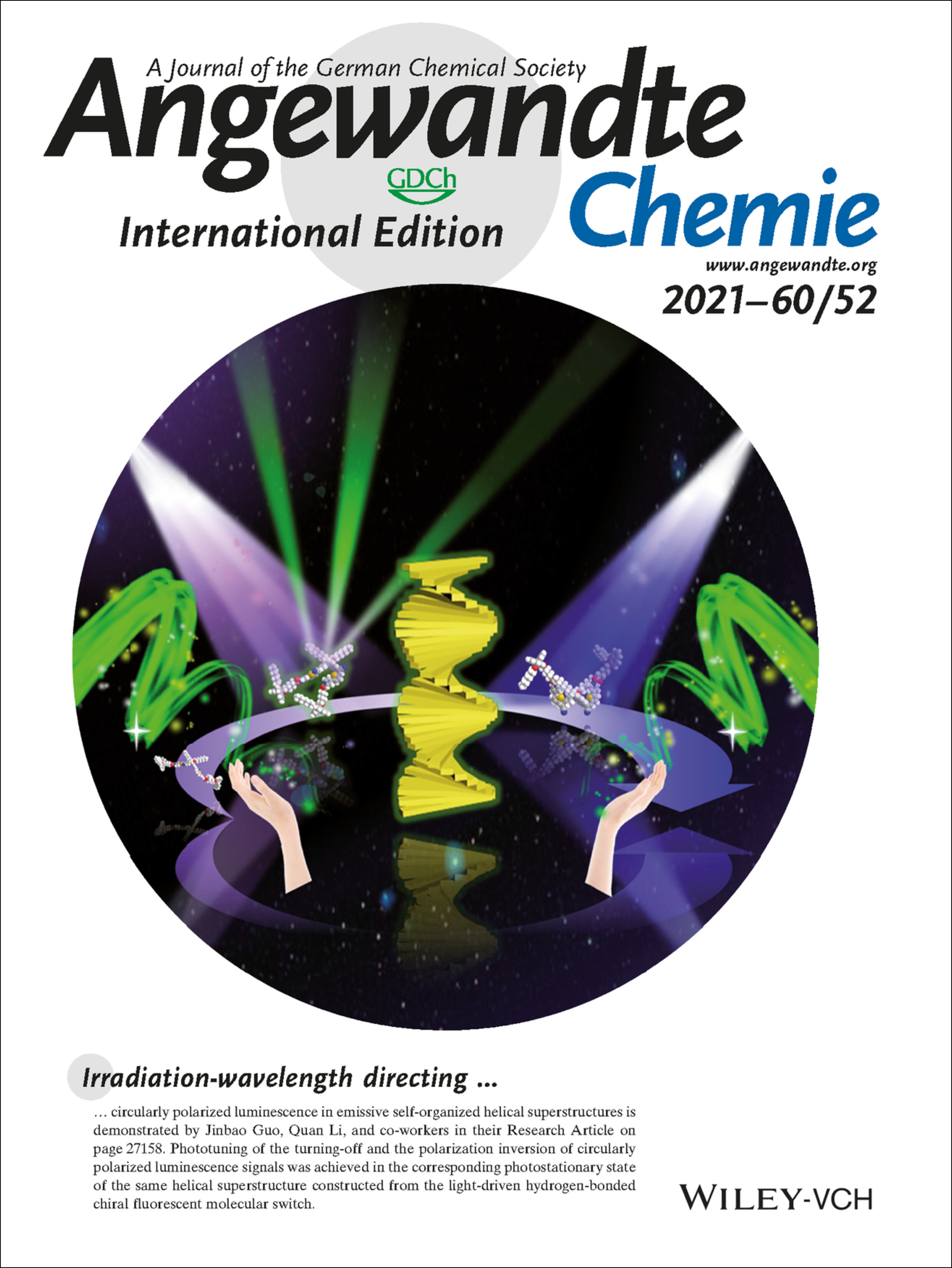
Irradiation-wavelength directing circularly polarized luminescence in emissive self-organized helical superstructures is demonstrated by Jinbao Guo, Quan Li, and co-workers in their Research Article on page 27158. Phototuning of the turning-off and the polarization inversion of circularly polarized luminescence signals was achieved in the corresponding photostationary state of the same helical superstructure constructed from the light-driven hydrogen-bonded chiral fluorescent molecular switch.
Back Cover: Hyperbranched Microwire Networks of Organic Cocrystals with Optical Waveguiding and Light-Harvesting Abilities (Angew. Chem. Int. Ed. 52/2021)
- Page: 27332
- First Published: 29 November 2021
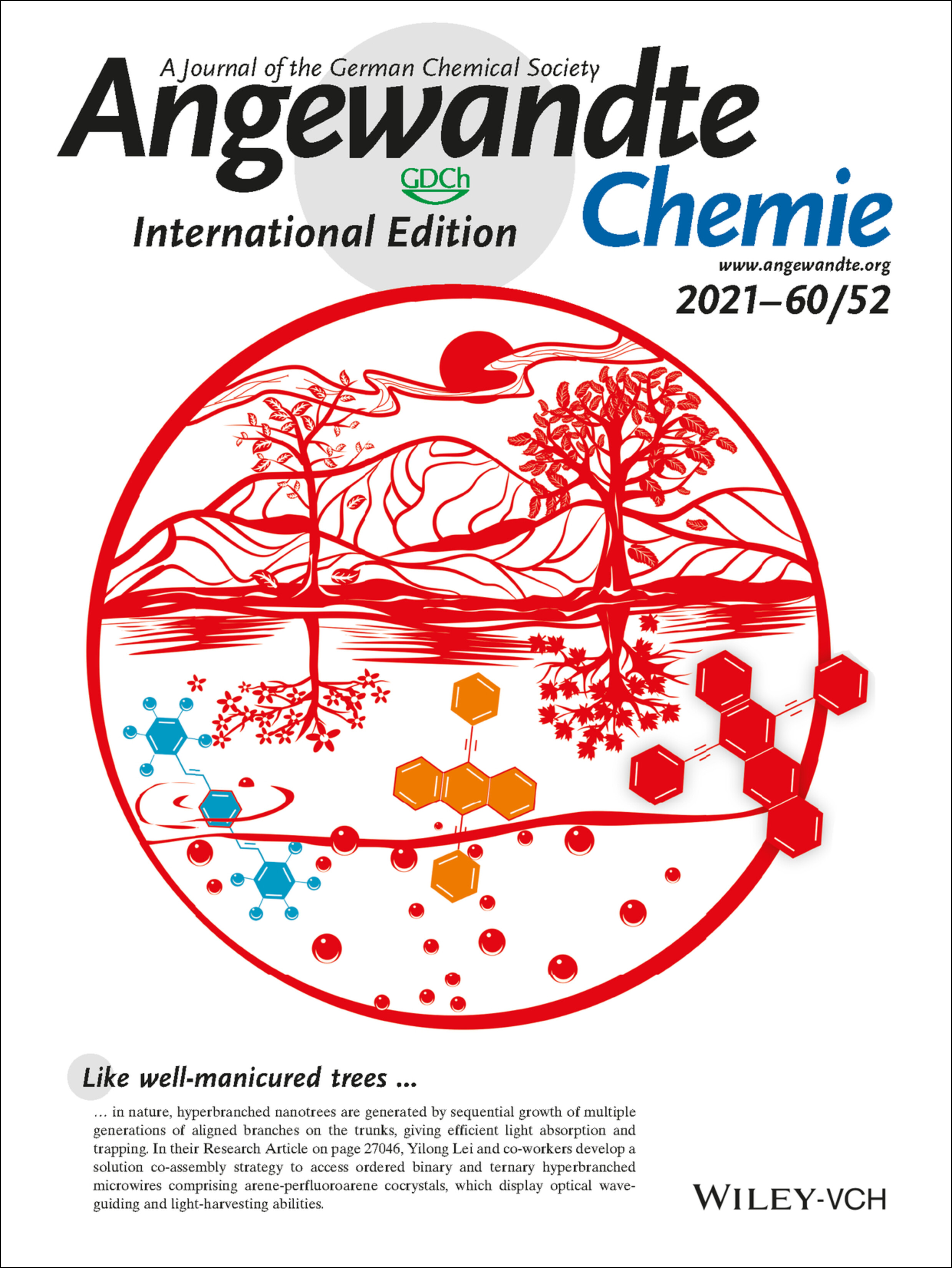
Like well-manicured trees in nature, hyperbranched nanotrees are generated by sequential growth of multiple generations of aligned branches on the trunks, giving efficient light absorption and trapping. In their Research Article on page 27046, Yilong Lei and co-workers develop a solution co-assembly strategy to access ordered binary and ternary hyperbranched microwires comprising arene-perfluoroarene cocrystals, which display optical waveguiding and light-harvesting abilities.
Frontispiece
Frontispiece: Strongly Coupled Cobalt Diselenide Monolayers for Selective Electrocatalytic Oxygen Reduction to H2O2 under Acidic Conditions
- First Published: 13 December 2021
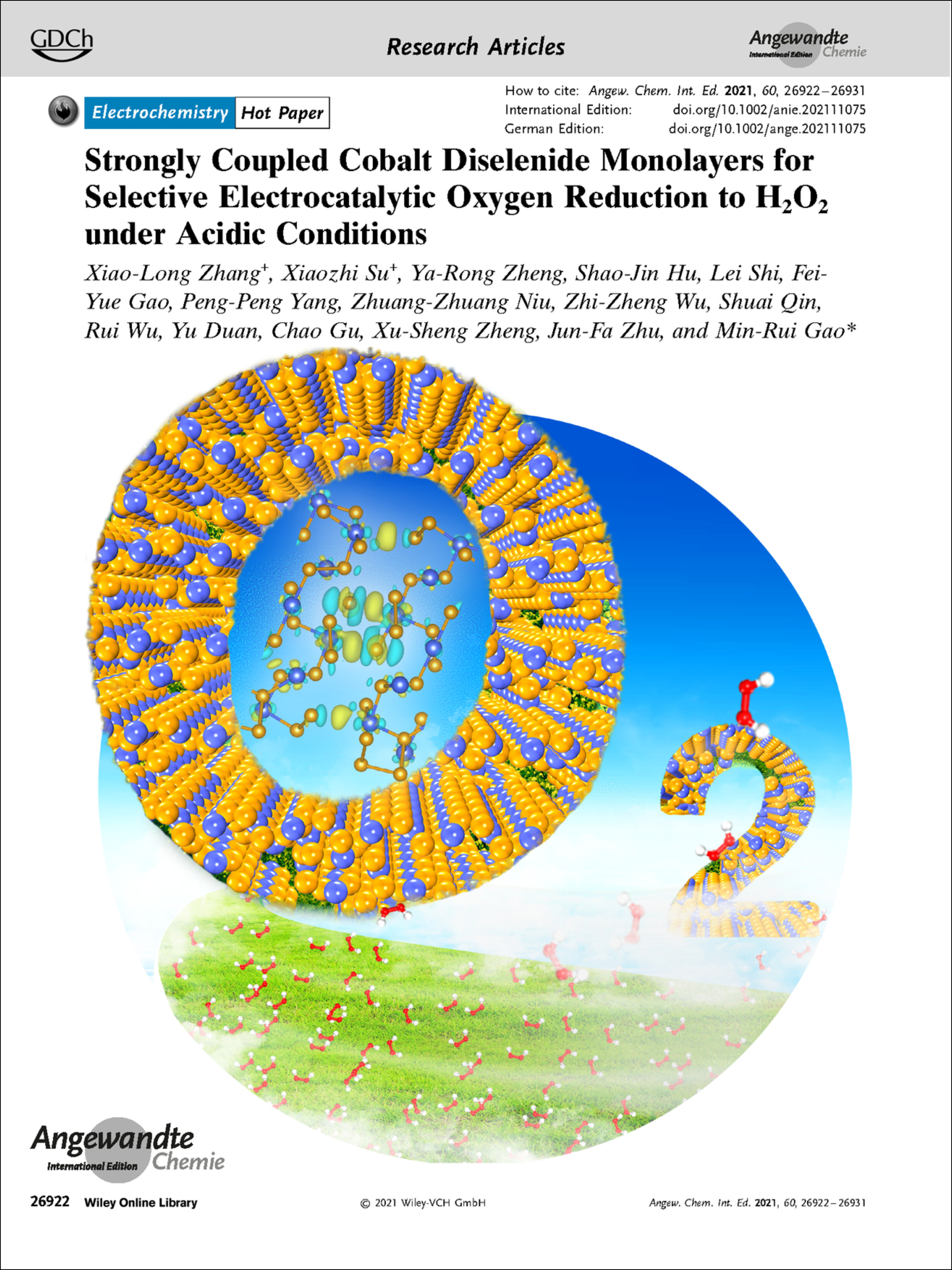
Electrocatalysis Cobalt diselenide monolayers as selective catalysts for the oxygen reduction to H2O2 in an acidic environment are reported by Min-Rui Gao et al. in their Research Article on page 26922.
Graphical Abstract
Graphical Abstract: Angew. Chem. Int. Ed. 52/2021
- Pages: 26873-26889
- First Published: 13 December 2021
Introducing …
Robin Teufel
- Page: 26893
- First Published: 03 November 2021

“If I could go back in time and do any experiment, it would be to collect some DNA (or to make life easier some eggs) from a T. rex and make Jurassic Park happen—at least my kids would love that … The best advice I have ever been given is to strike while the iron is hot …” Find out more about Robin Teufel in his Introducing … Profile.
Minireviews
Electrocatalysis
What Makes High-Entropy Alloys Exceptional Electrocatalysts?
- Pages: 26894-26903
- First Published: 26 August 2021

High-entropy alloys offer a huge variety of multielement active sites on a single catalytic surface. This special polyelemental arrangement implies several different fundamental concepts in structure–activity correlations compared to traditional electrocatalysts, which are summarised and their implications for the possibility to adjust the catalytic properties with different limitations are discussed in detail.
Reviews
Molecular Electronics
Electrochemical Potential-Driven High-Throughput Molecular Electronic and Spintronic Devices: From Molecules to Applications
- Pages: 26904-26921
- First Published: 27 July 2021
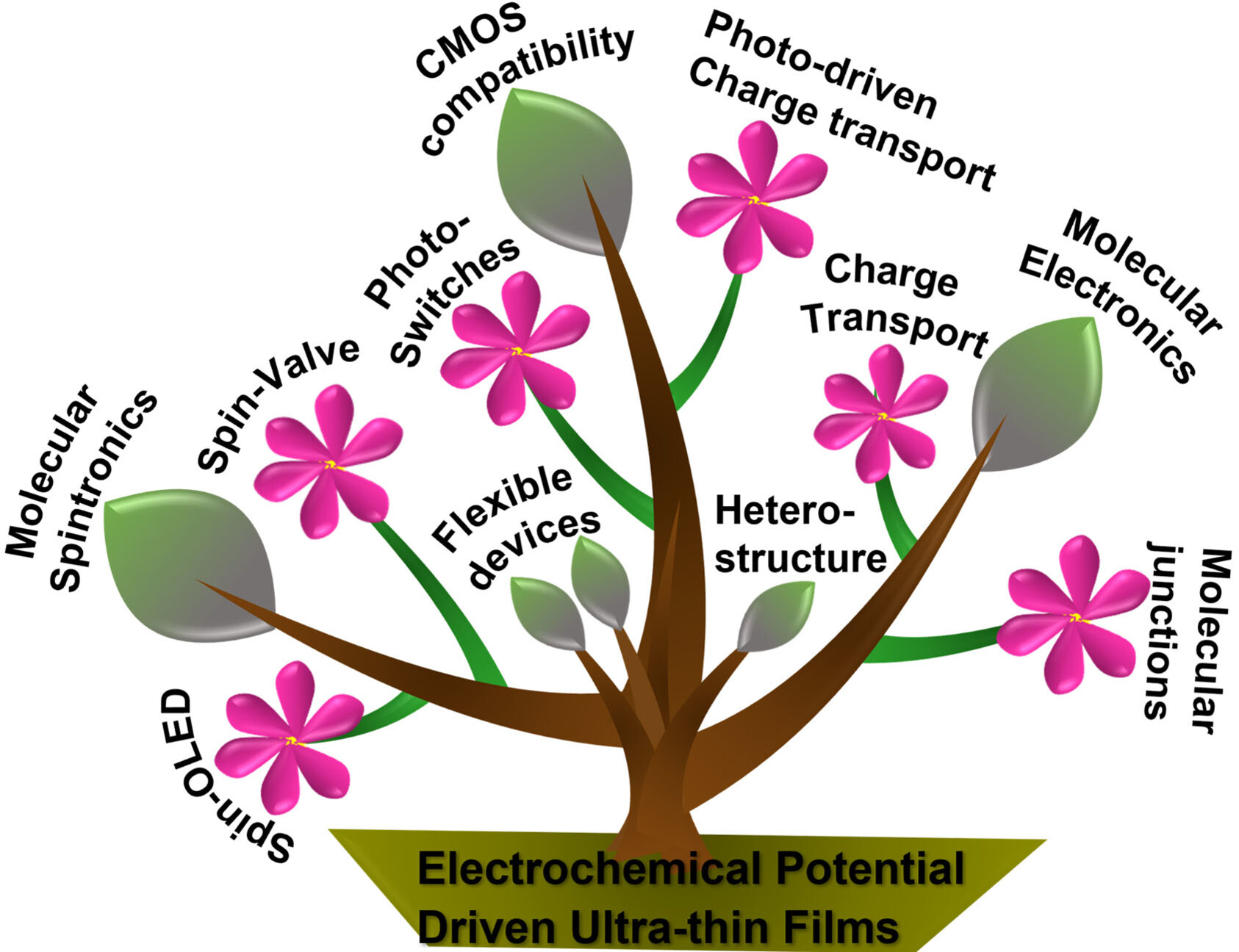
This Review describes recent advances in the electrochemical potential-driven preparation of nanometric molecular films of various molecules on technologically relevant substrates, including non-magnetic and magnetic electrodes to investigate the stimuli-responsive charge and spin transport phenomena. We hope to encourage the design of a facile and efficient route for molecular optoelectronic and flexible electronic applications.
Research Articles
Electrochemistry | Hot Paper
Strongly Coupled Cobalt Diselenide Monolayers for Selective Electrocatalytic Oxygen Reduction to H2O2 under Acidic Conditions
- Pages: 26922-26931
- First Published: 22 September 2021
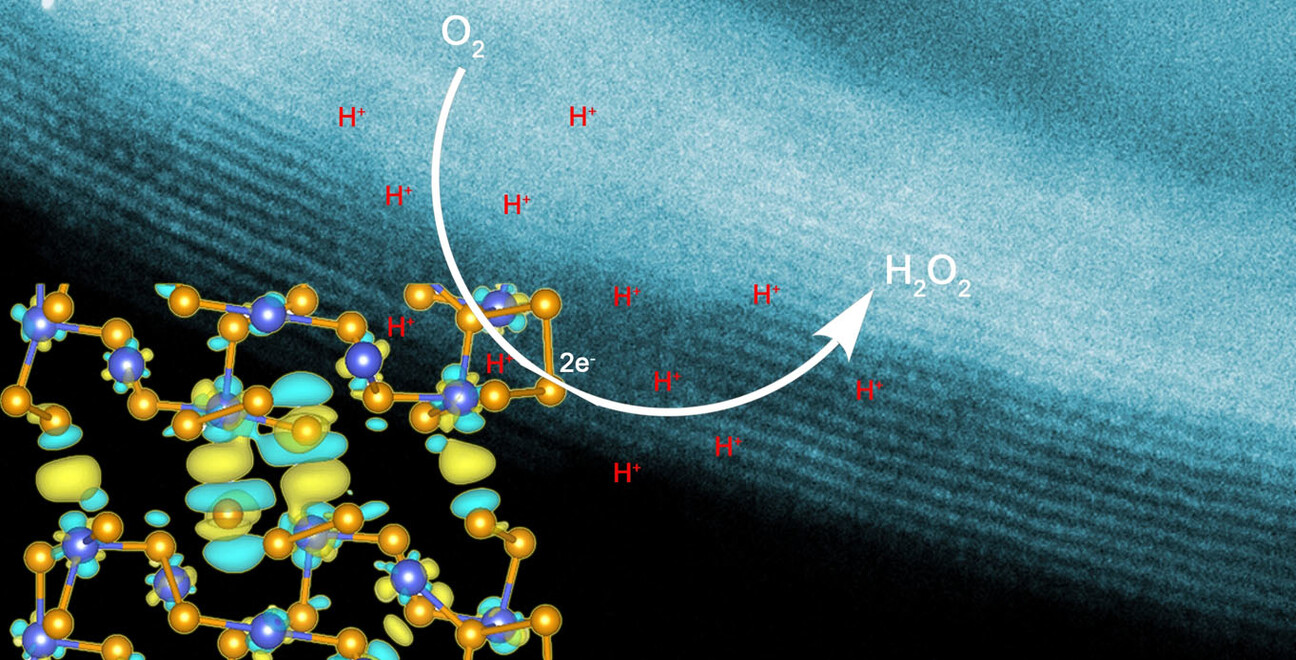
A strategy that narrows the interlayer distance of cobalt diselenide (CoSe2) is reported, which enables strong coupling between CoSe2 monolayers. The strongly coupled CoSe2 can catalyze electrosynthesis of H2O2 in acidic media efficiently, which yields Faradaic efficiency of 96.7 %, current density of 50.04 mA cm−2, and product rate of 30.60 mg cm−2 h−1, outperforming all catalysts reported previously in acidic environments.
Host–Guest Systems
Rotation in an Enantiospecific Self-Assembled Array of Molecular Raffle Wheels
- Pages: 26932-26938
- First Published: 23 September 2021

A kagome network on the Ag(111) surface hosts guest molecules with enantiomeric selectivity. Each larger pore confines a single guest molecule. The punctuated pirouette of the guest molecule in this confined space is unravelled by a combination of density functional theory and variable temperature scanning tunnelling microscopy in real time at the single molecule level.
Metal-Organic Frameworks | Hot Paper
High-Throughput Discovery of a Rhombohedral Twelve-Connected Zirconium-Based Metal-Organic Framework with Ordered Terephthalate and Fumarate Linkers
- Pages: 26939-26946
- First Published: 14 September 2021
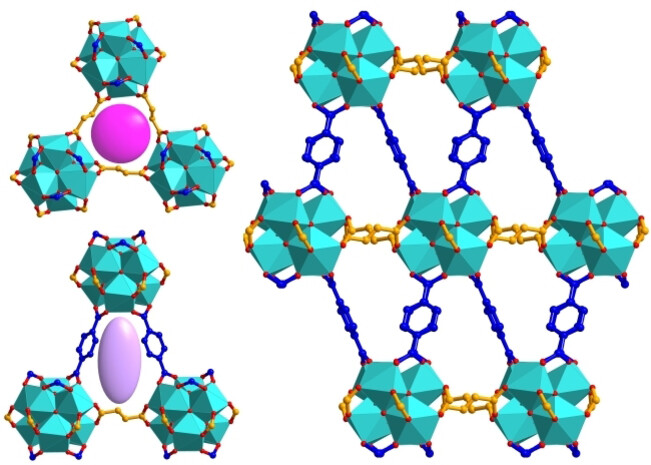
The ordered arrangement of terephthalate and fumarate linkers over the fcu net produces a zirconium-based MOF Zr6(BDC)3(Fum)3 with two distinct windows and multiple guest diffusion pathways. This phase is formed by single-step synthesis in a narrow region of the available chemical space, and its identification required a large set of synthetic experiments that were facilitated by automated high-throughput methods.
Bioanalytics
Sink/Float Magnetic Immunoassays for In-Field Bioassays
- Pages: 26947-26953
- First Published: 13 October 2021
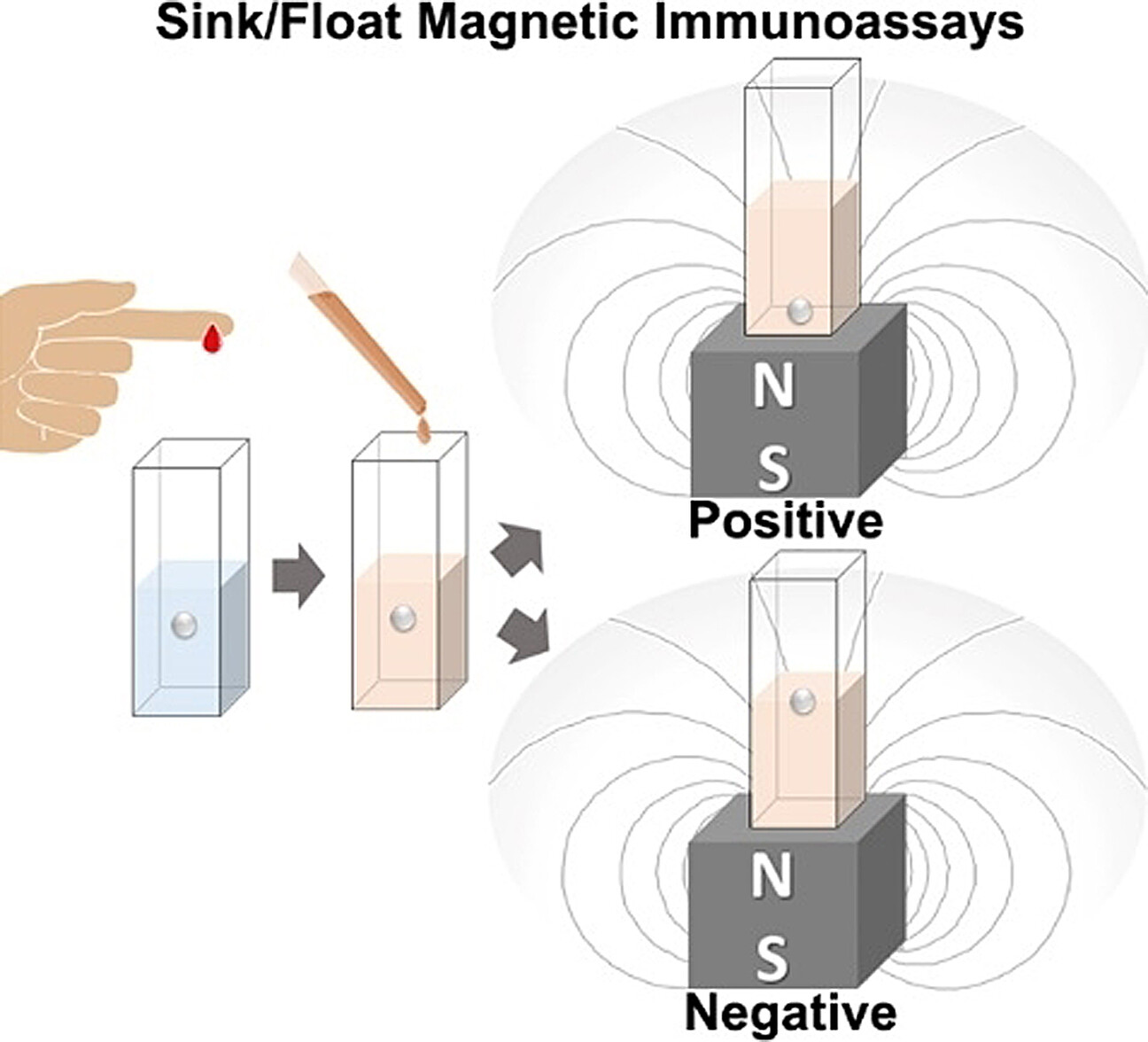
Sink/float magnetic immunoassays detect proteins, antibodies, and bacteria in samples using a simple mix-and-observe protocol that uses a biofunctionalized small sphere, some liquid reagents and a small permanent magnet. A simple sink/float test of the sphere identifies if the analyte is above or below a predetermined level; the sphere sinks only if the analyte is above the concentration level.
NMR Spectroscopy
Parahydrogen Hyperpolarization Allows Direct NMR Detection of α-Amino Acids in Complex (Bio)mixtures
- Pages: 26954-26959
- First Published: 17 September 2021

Non-hydrogenative parahydrogen hyperpolarization allows the detection and quantification of α-amino acids down to sub-micromolar concentrations. This method can also be applied to aqueous mixtures after dilution with methanol without any additional sample treatment. This direct approach was tested on human urine, allowing a well-resolved detection of amino acids despite the complexity of the mixture.
Antibiotics
Catalytic Control of Spiroketal Formation in Rubromycin Polyketide Biosynthesis
- Pages: 26960-26970
- First Published: 15 October 2021
Flow Batteries
Spatial Structure Regulation: A Rod-Shaped Viologen Enables Long Lifetime in Aqueous Redox Flow Batteries
- Pages: 26971-26977
- First Published: 14 October 2021

We report a rod-like sulfonated viologen (R-Vi) anolyte for aqueous redox flow batteries (AORFBs). R-Vi possesses a low membrane-penetration rate of ≈10−10 cm2 s−1 and the lowest redox potential of −0.55 V vs. SHE among one-electron-storage viologens in AORFBs simultaneously. The R-Vi-based AORFB exhibits an extremely low capacity-fade rate of 0.007 % per cycle in 3200 continuous charging–discharging processes.
Natural Products
Divergent Synthesis of Skeletally Distinct Arboridinine and Arborisidine
- Pages: 26978-26985
- First Published: 19 October 2021
Polymers | Very Important Paper
Non-uniform Photoinduced Unfolding of Supramolecular Polymers Leading to Topological Block Nanofibers
- Pages: 26986-26993
- First Published: 08 October 2021
LMP Inducers
Targeted Enrichment of Enzyme-Instructed Assemblies in Cancer Cell Lysosomes Turns Immunologically Cold Tumors Hot
- Pages: 26994-27004
- First Published: 13 October 2021
Electrochemistry | Hot Paper
A Strategy for Site- and Chemoselective C−H Alkenylation through Osmaelectrooxidative Catalysis
- Pages: 27005-27012
- First Published: 19 October 2021
Supercapacitors
One-Pot Green Process to Synthesize MXene with Controllable Surface Terminations using Molten Salts
- Pages: 27013-27018
- First Published: 08 October 2021

This is the first study to use a molten-salt-assisted electrochemical etching (MS-E-etching) method to synthesize Ti3C2Cl2 without metallic impurities. The Tx surface terminations could be in situ modified from −Cl to −O and/or −S in this one-pot process. The obtained −O-terminated Ti3C2Tx electrode exhibited a significant increase in capacity.
Polycyclic Aromatic Compounds | Hot Paper
Construction of Tricyclic Nitrogen Heterocycles by a Gold(I)-Catalyzed Cascade Cyclization of Allenynes and Application to Polycyclic π-Electron Systems
- Pages: 27019-27025
- First Published: 30 September 2021

The gold-catalyzed biscyclization of hydroxyisobutyryl (Hib)-protected aminoallenynes was promoted by BrettPhosAuNTf2 in the presence of iPrOH to give 1,2-dihydrobenzo[cd]indole derivatives, some of which were converted into nitrogen-containing polycyclic aromatic compounds with highly conjugated π-electron systems. A hexacyclic indolium salt (see structure) showed concentration-dependent photophysical properties attributable to aggregate formation.
Liquid Crystals | Hot Paper
Flower-Like Colloidal Particles through Precipitation Polymerization of Redox-Responsive Liquid Crystals
- Pages: 27026-27030
- First Published: 21 October 2021
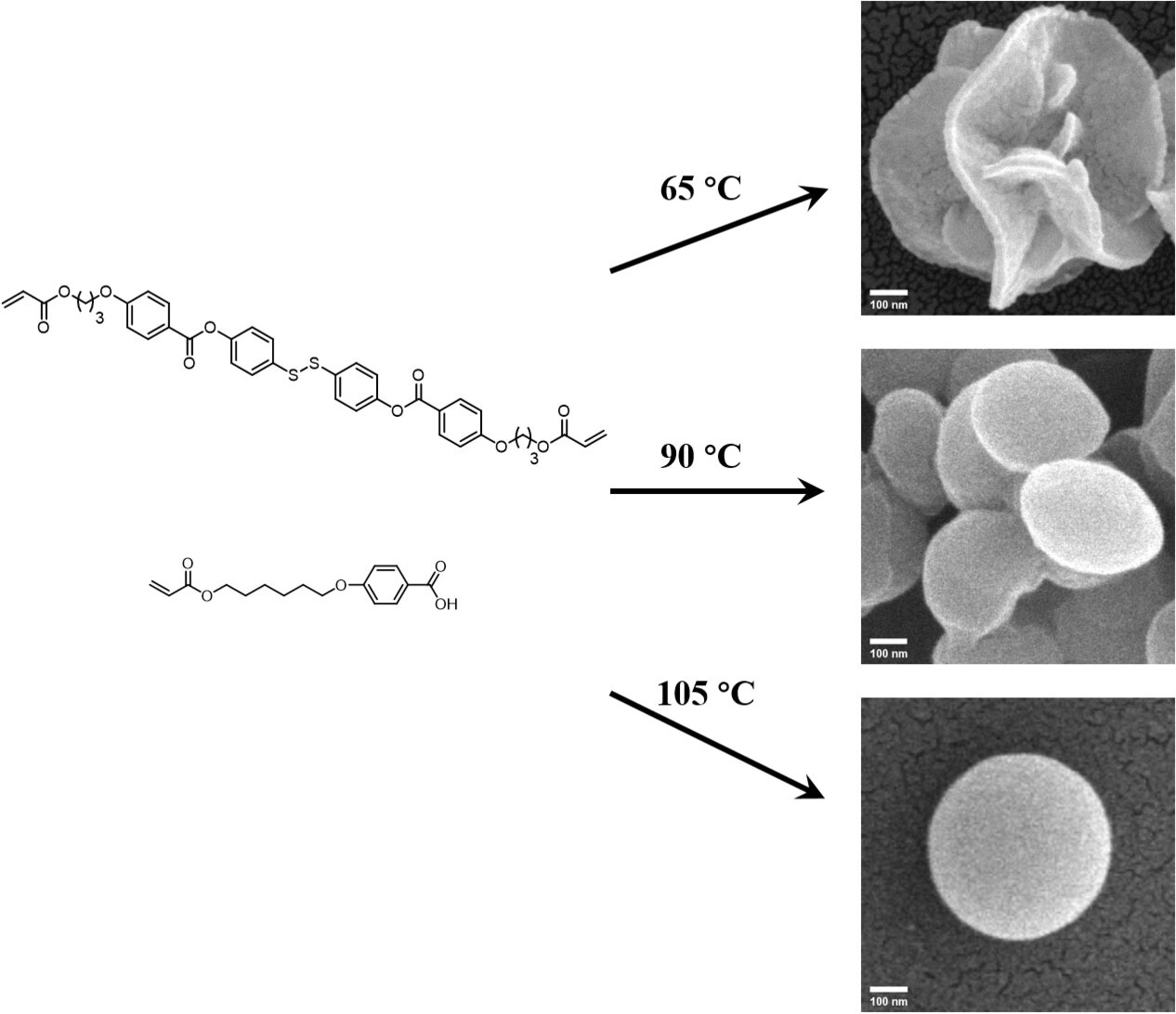
Flower-like particles of a redox-responsive liquid crystalline mixture prepared by precipitation polymerization are reported. The influences of monomer composition, polymerization temperature, and solvent on the particle shape are investigated. The shapes formed in the early stage of polymerization remain unchanged. Under reducing conditions, the flower-like particles are degraded much more rapidly than the spherical particles due to their higher surface-to-volume ratio.
Sensors
Chiroptical Switching and Quantitative Chirality Sensing with (Pseudo)halogenated Quinones
- Pages: 27031-27038
- First Published: 22 October 2021

Quinones are used for quantitative UV/CD sensing of the concentration and enantiomeric excess of more than thirty aliphatic and aromatic chiral amines, amino alcohols and amino acids. The integration of redox switching into the sensing protocol allows spectral deconvolution of otherwise overlapping CD spectra that are obtained with challenging compound mixtures.
Redox Flow Batteries
Development of High Energy Density Diaminocyclopropenium-Phenothiazine Hybrid Catholytes for Non-Aqueous Redox Flow Batteries
- Pages: 27039-27045
- First Published: 20 October 2021
Optical Materials | Hot Paper
Hyperbranched Microwire Networks of Organic Cocrystals with Optical Waveguiding and Light-Harvesting Abilities
- Pages: 27046-27052
- First Published: 21 October 2021
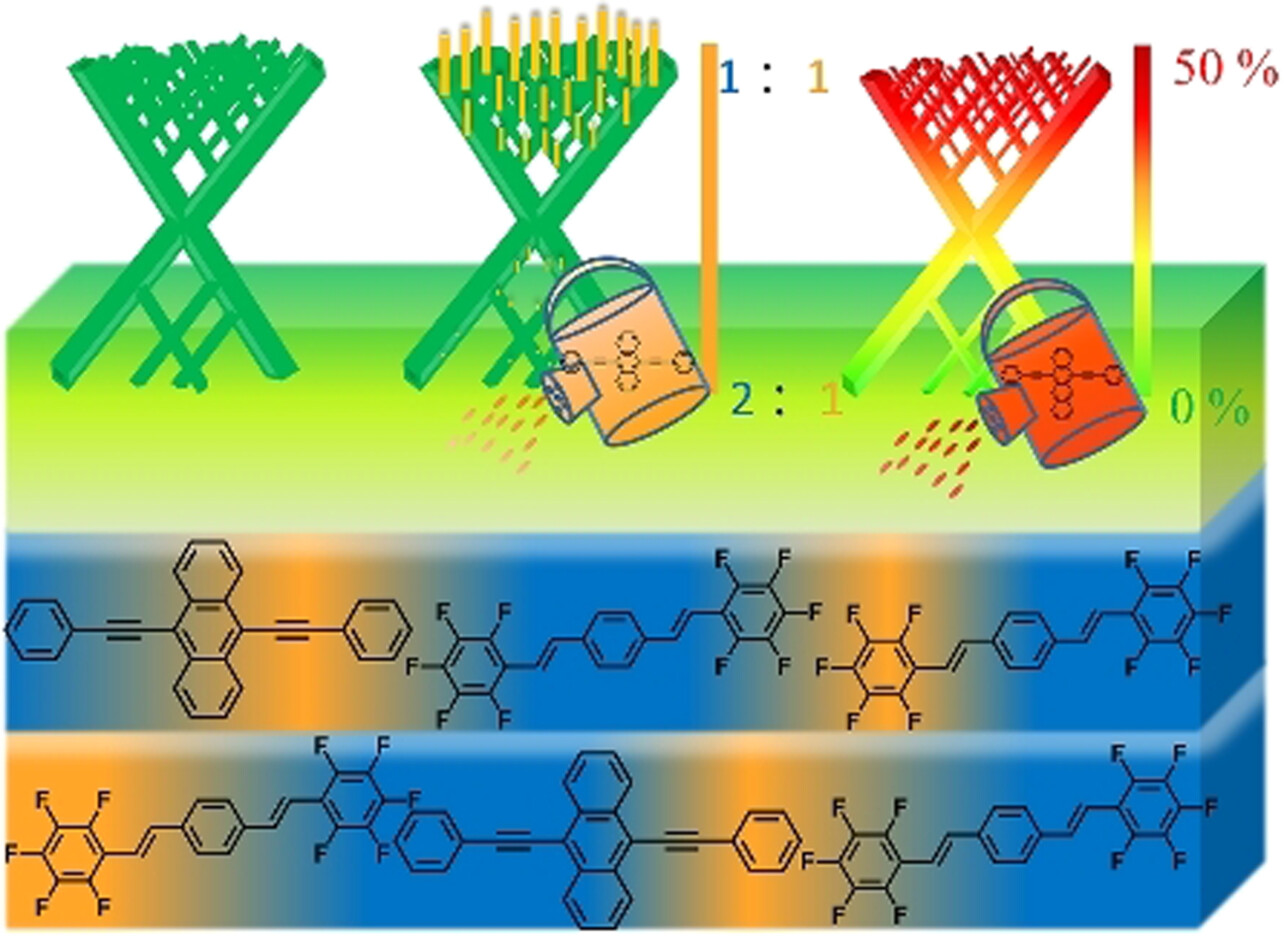
Hierarchical micro- and nanostructures made of π-conjugated molecules are not yet reported due to the weak control over intermolecular interactions and little-known complex assembly behavior of organic species. Hyperbranched microwire networks comprising binary organic arene-perfluoroarene cocrystals were created, which show optical waveguiding and light-harvesting abilities.
Acylation
Three-Component Reaction to 1,4,2-Diazaborole-Type Heteroarene Systems
- Pages: 27053-27061
- First Published: 01 October 2021

The reaction product between the bulky FmesBH2 borane and an isonitrile serves as a B/N frustrated Lewis pair that adds nitriles to form the dihydro-1,4,2-diazaborole heteroarene derivatives. One example of this class of compounds was shown to undergo a cycloaddition reaction with N-phenylmaleimide.
Organometallic Chemistry | Hot Paper
A Free Aluminylene with Diverse σ-Donating and Doubly σ/π-Accepting Ligand Features for Transition Metals
- Pages: 27062-27069
- First Published: 06 October 2021
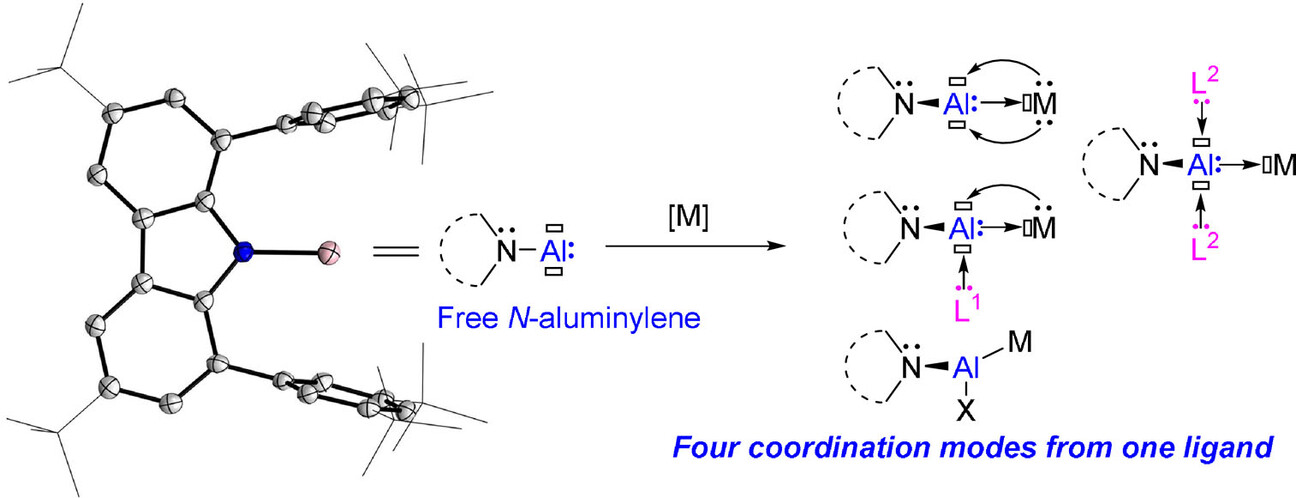
A crystalline carbazolylaluminylene with a monocoordinated aluminium atom featuring a lone pair of electrons and two vacant orbitals has been isolated at room temperature. The coordination behavior of this aluminylene towards transition metal centers is shown to afford a series of novel aluminylene and alumanyl complexes with diverse coordination modes in a one-step process.
Difluoromethylation
Copper-Catalyzed Difluoromethylation of Alkyl Iodides Enabled by Aryl Radical Activation of Carbon–Iodine Bonds
- Pages: 27070-27077
- First Published: 15 October 2021
Covalent Organic Frameworks
Oil–Water–Oil Triphase Synthesis of Ionic Covalent Organic Framework Nanosheets
- Pages: 27078-27085
- First Published: 07 October 2021
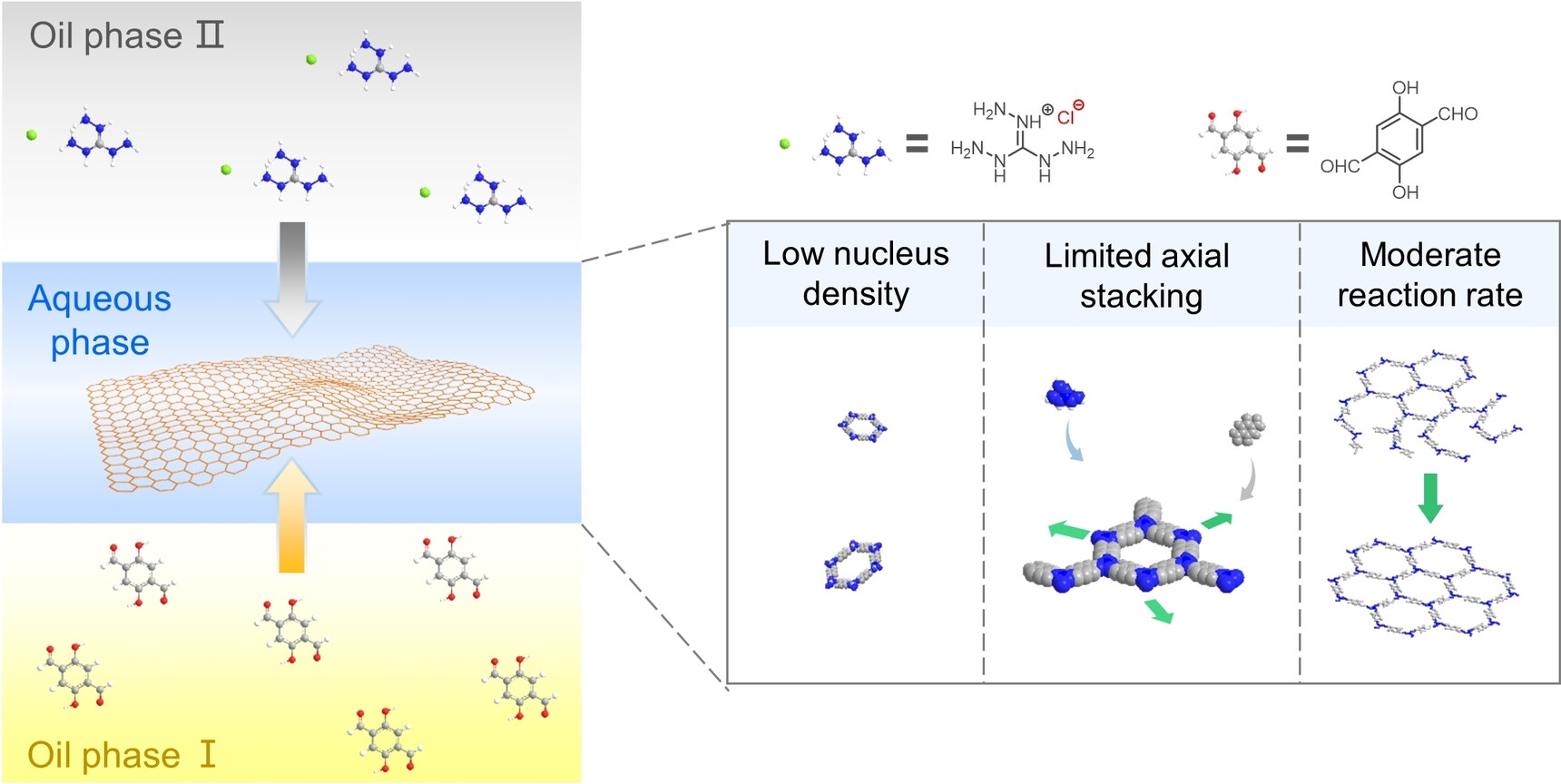
An oil–water–oil triphase method based on a phase engineering strategy is developed for the bottom-up synthesis of ionic covalent organic framework nanosheets (iCOFNs). A favourable reaction region with moderate monomer concentration is achieved in the middle water phase. The resulting three cationic and anionic iCOFNs show potential for ultrathin biogas separation membranes.
Batteries
Fire-Retardant, Stable-Cycling and High-Safety Sodium Ion Battery
- Pages: 27086-27094
- First Published: 01 October 2021
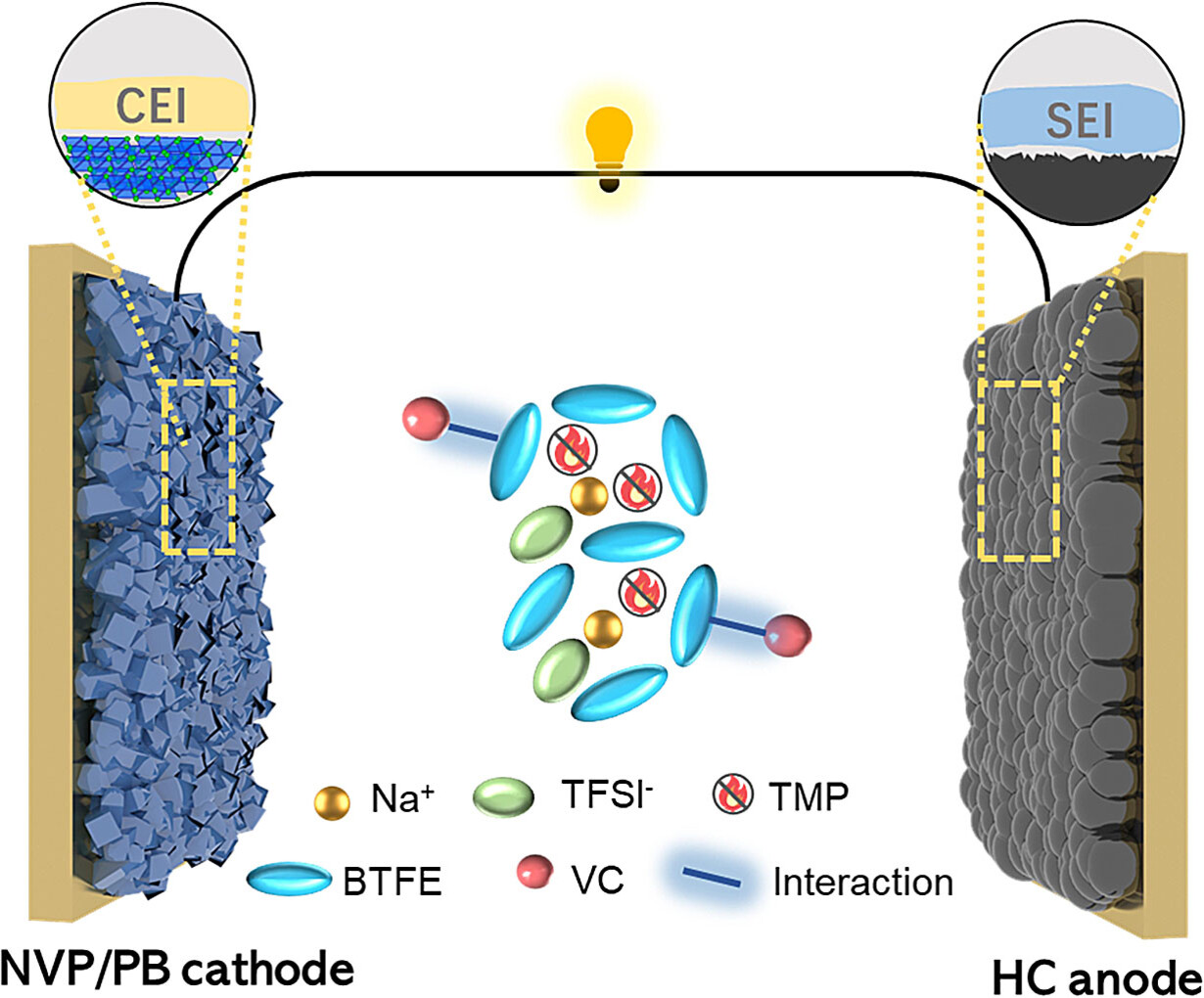
Safety is always a topic of concern after reports of devices catching fire due to battery failure. Using non-flammable electrolyte as an ultimate solution is difficult to be applied to commercial batteries because of various problems such as poor compatibility, high viscosity and so on. Here, we report a non-flammable electrolyte with excellent comprehensive performance, and applied it to sodium-ion pouch cells with different promising materials.
Single Atom Catalysis
Water Splitting by C60-Supported Vanadium Single Atoms
- Pages: 27095-27101
- First Published: 05 October 2021
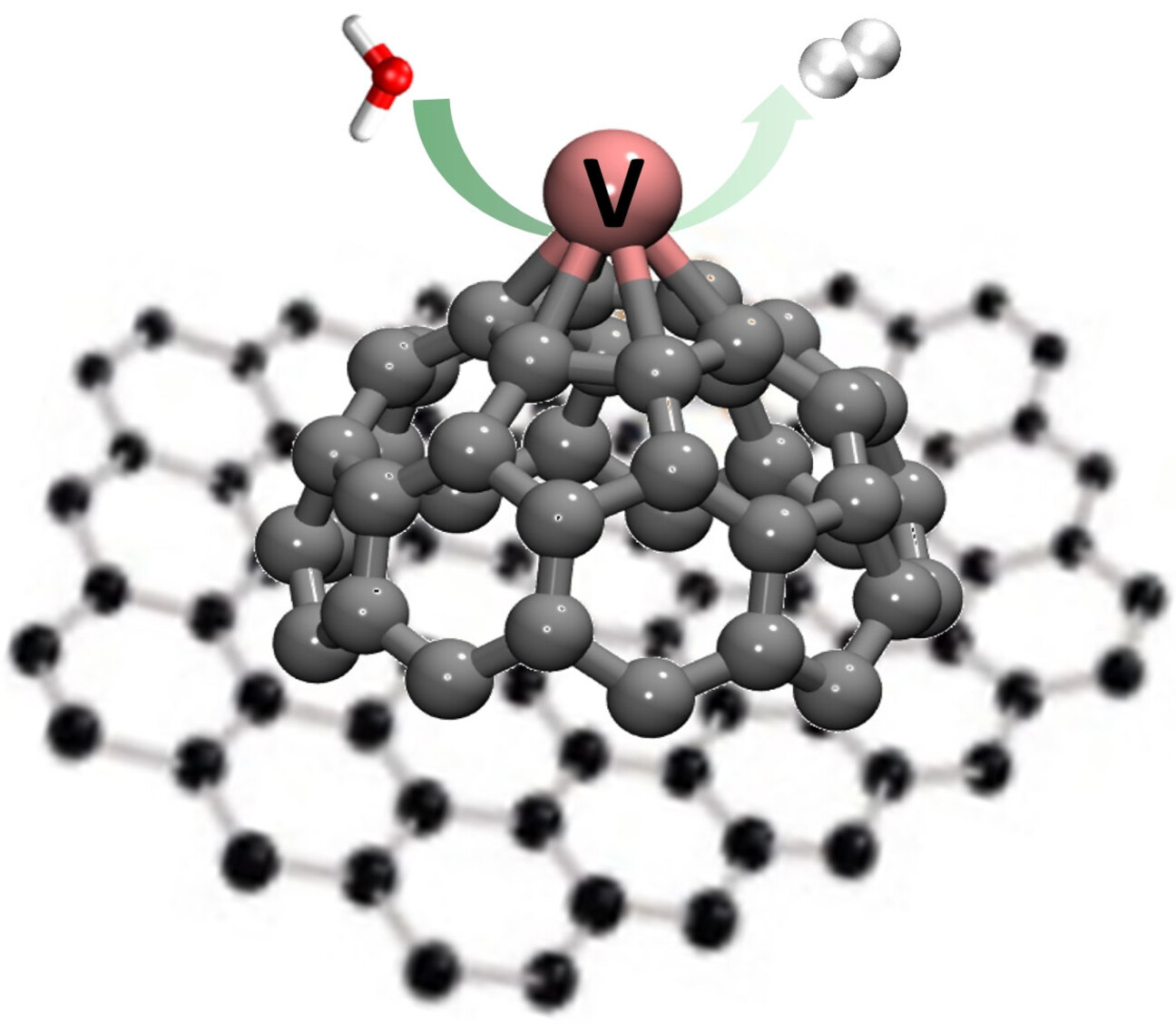
Splitting of water by a single vanadium is greatly facilitated by a C60 support, which can be regarded as a small piece of porous carbon nanomaterials, especially those with intrinsic pentagonal defects and curvatures. The compelling experimental and theoretical evidence demonstrates the important role of support in single vanadium atom catalysis.
Cathode Materials | Hot Paper
Tailoring Co3d and O2p Band Centers to Inhibit Oxygen Escape for Stable 4.6 V LiCoO2 Cathodes
- Pages: 27102-27112
- First Published: 19 October 2021

The escape of surface oxygen and Li-insulator Co3O4 formation are the main causes for the capacity fading of 4.6 V LiCoO2 cathode. The oxygen escape is significantly inhibited by tailoring the Co3d and O2p band centers and enlarging their band gap with MgF2 doping, which enables a stable cycling of 4.6 V LiCoO2 cathode.
Photothermal Conversion
High-Entropy-Alloy Nanoparticles with Enhanced Interband Transitions for Efficient Photothermal Conversion
- Pages: 27113-27118
- First Published: 04 October 2021

A strategy toward the optimization of photothermal conversion materials with broad optical absorption and high conversion efficiency via the d-d interband transitions is demonstrated. The high-entropy-alloy nanoparticles could realize an excellent solar harvesting performance especially compositing with up to seven 3d elements in a single phase, ascribing to the fully filled energy regions below and above the Fermi level.
Electrochemistry | Hot Paper
Dual-Ion Intercalation and High Volumetric Capacitance in a Two-Dimensional Non-Porous Coordination Polymer
- Pages: 27119-27125
- First Published: 01 October 2021
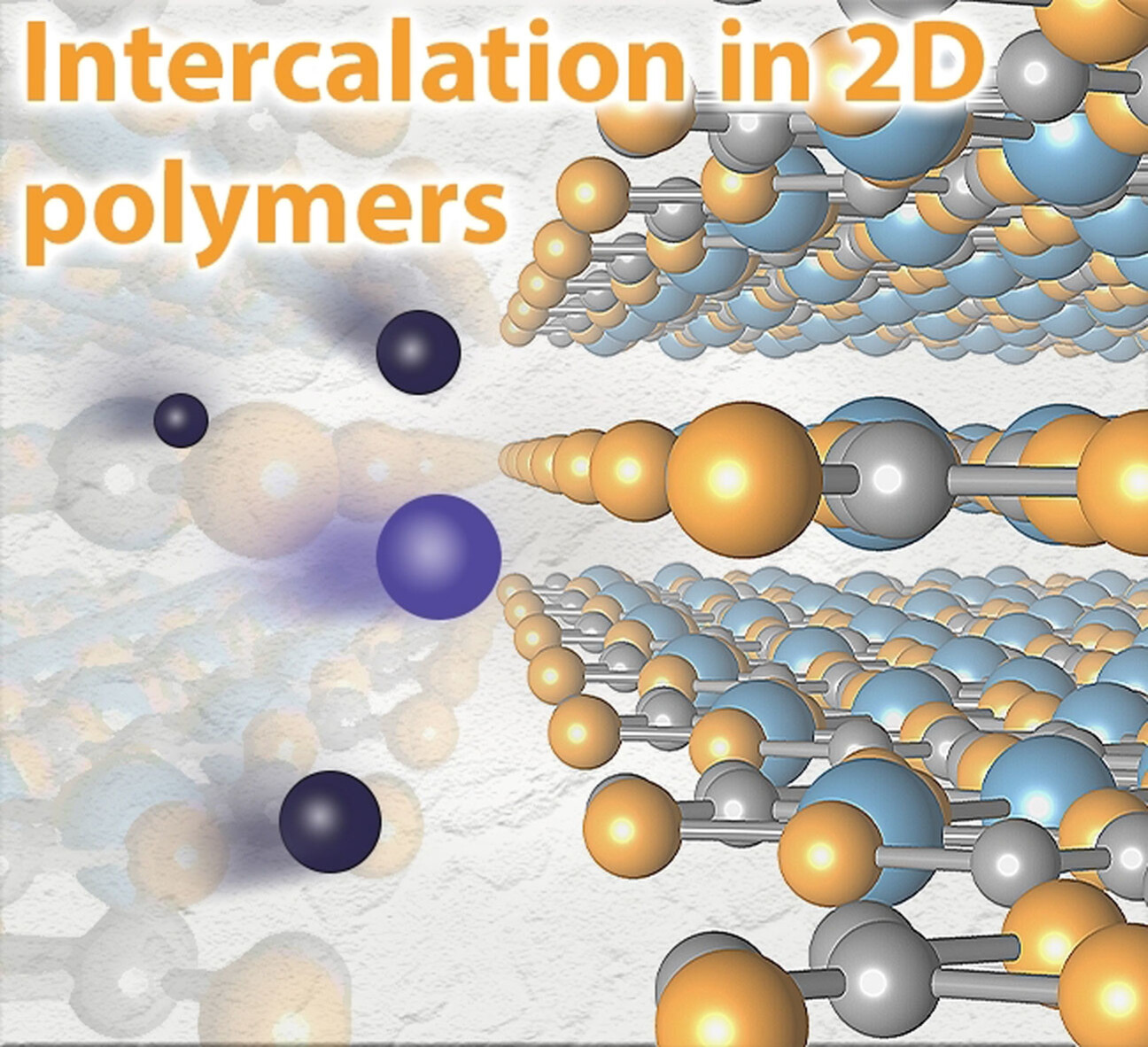
A two-dimensional coordination polymer (Ni3BHT) demonstrates rapid and reversible intercalation of both cations and anions in an electrochemical capacitor (EC). This first observation of dual-ion intercalation in ECs presents a unique scenario, wherein cation intercalation in Ni3BHT is pseudocapacitive but anion intercalation is capacitive in nature.
Water Splitting | Hot Paper
Engineering Lattice Oxygen Activation of Iridium Clusters Stabilized on Amorphous Bimetal Borides Array for Oxygen Evolution Reaction
- Pages: 27126-27134
- First Published: 09 October 2021
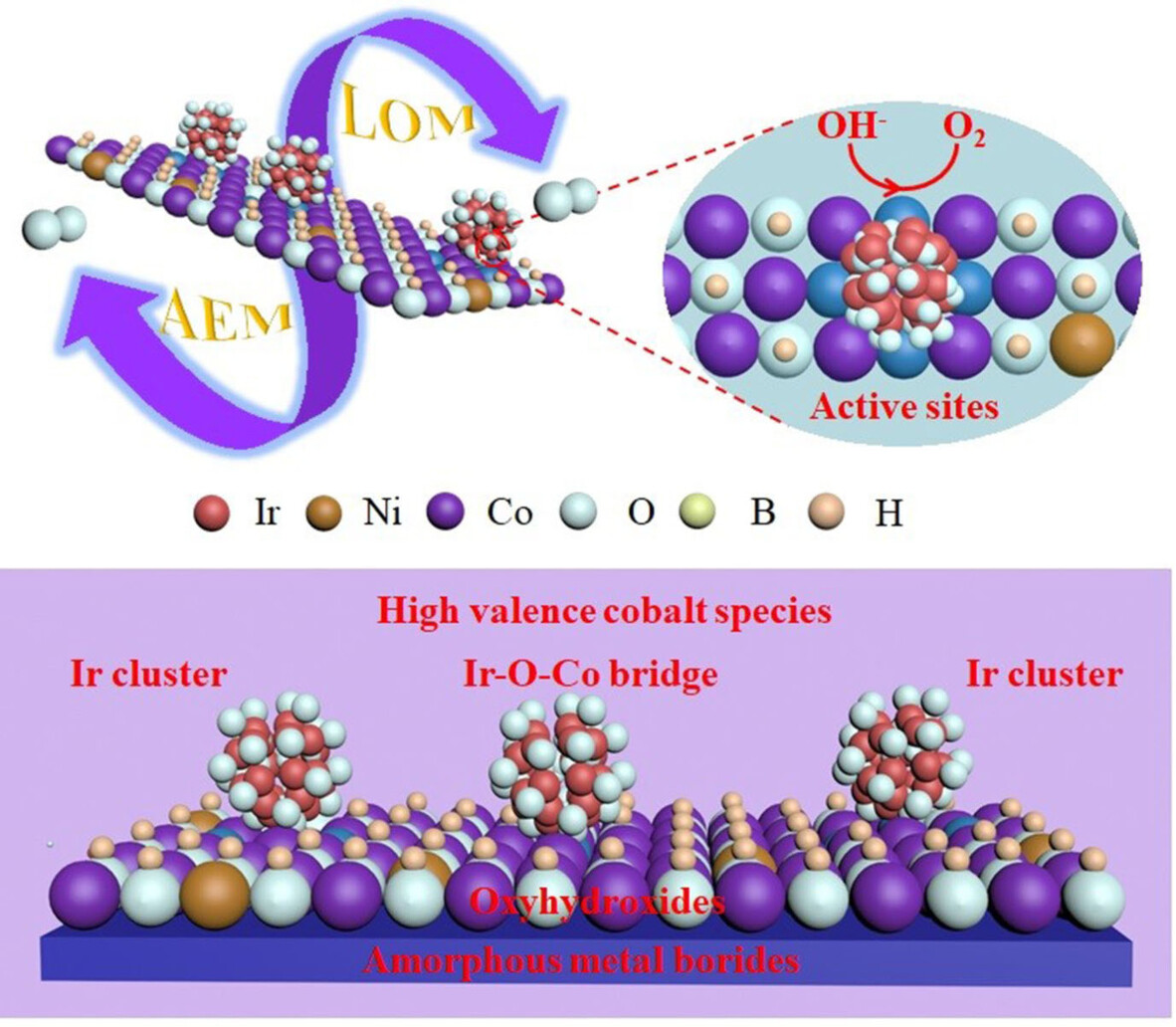
Iridium clusters stabilized surface reconstructed oxyhydroxides on an amorphous metal boride array are reported, achieving an ultralow overpotential of 178 mV at 10 mA cm−2 for OER in alkaline medium. The coupling of iridium clusters induces the formation of high-valence cobalt species and Ir–O–Co bridges between iridium and oxyhydroxides at the atomic scale.
Memory Devices
Towards High-Performance Resistive Switching Behavior through Embedding a D-A System into 2D Imine-Linked Covalent Organic Frameworks
- Pages: 27135-27143
- First Published: 29 September 2021
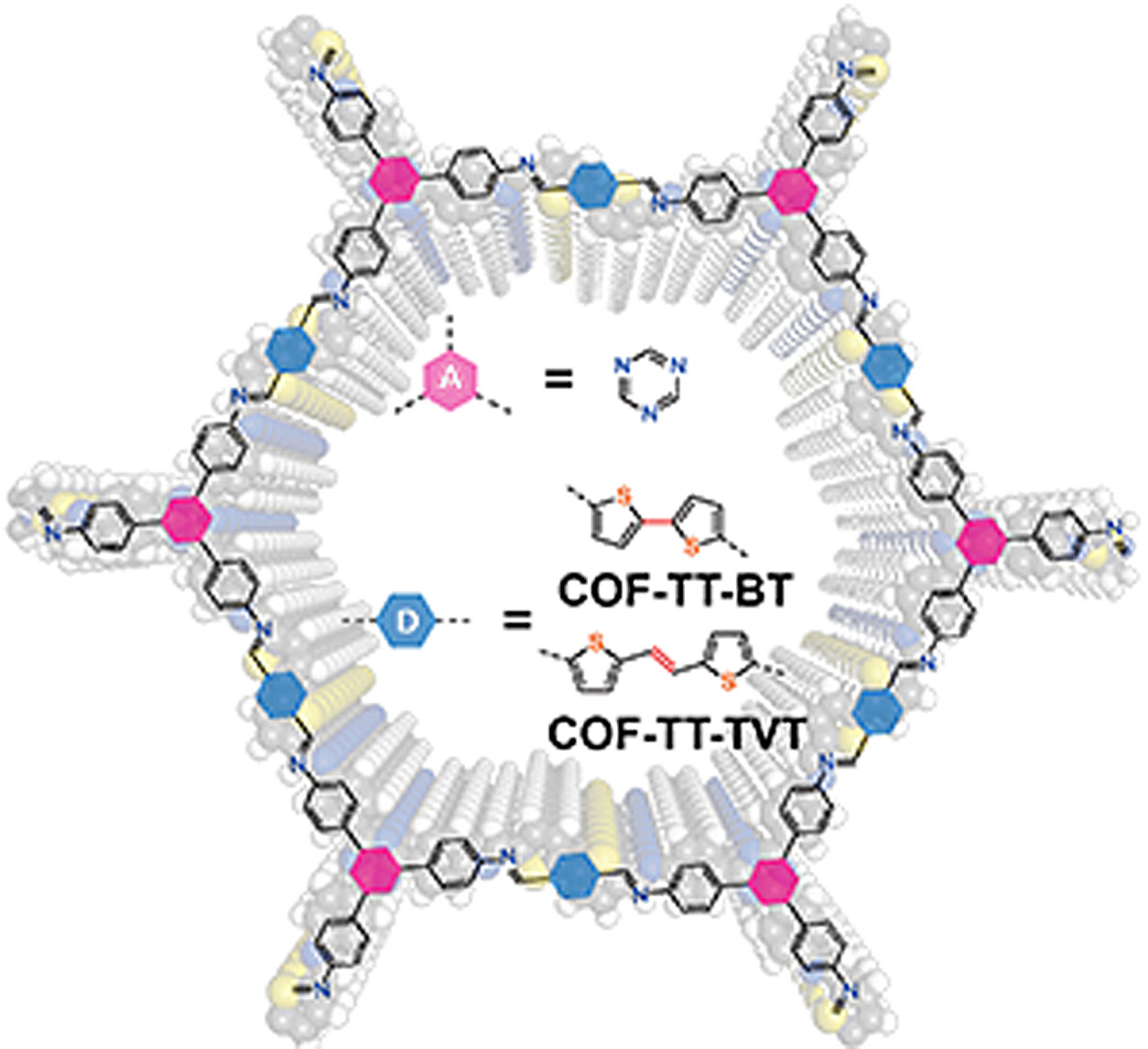
Two D-A-type covalent organic frameworks have been designed and prepared following a novel strategy for the construction of endurable and reliable memory devices. The state-of-the-art memristor-based COF-TT-BT thin film showed typical rewritable resistive switching behavior, a high ON/OFF current ratio (ca. 105), good endurance of 319 cycles, and a long retention time of 3.3×104 s.
Metal–Organic Frameworks | Hot Paper
Guest-Driven Light-Induced Spin Change in an Azobenzene Loaded Metal–Organic Framework
- Pages: 27144-27150
- First Published: 21 October 2021
Nonlinear Optical Materials | Hot Paper
Strong SHG Responses in a Beryllium-Free Deep-UV-Transparent Hydroxyborate via Covalent Bond Modification
- Pages: 27151-27157
- First Published: 11 October 2021
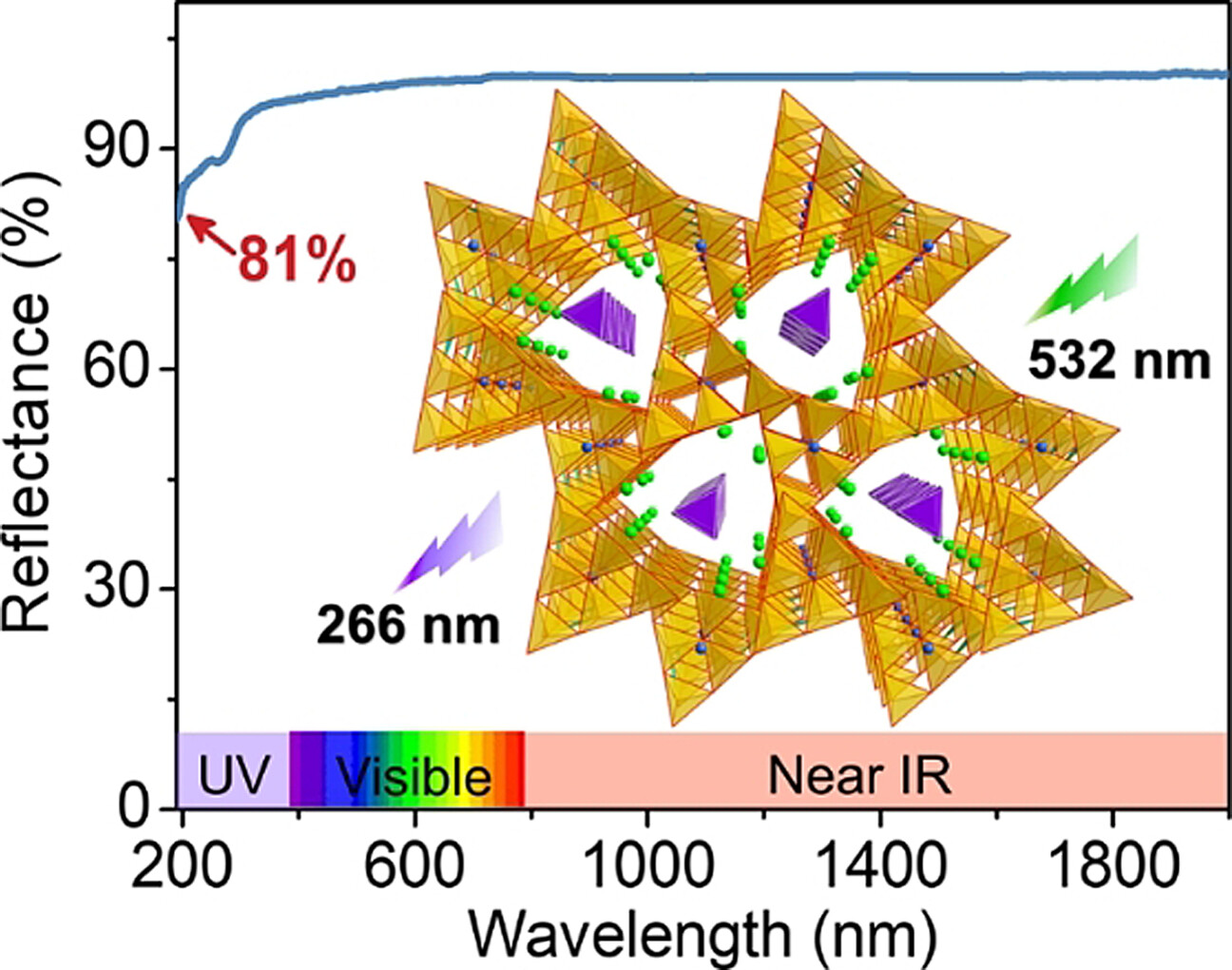
A beryllium-free deep-ultraviolet nonlinear optical hydroxyborate, NaSr3(OH)(B9O16)[B(OH)4] (NSBOH), was constructed by a covalent bond modification strategy via a facile hydrothermal reaction. Moisture-stable NSBOH is SHG-active at both 1064 nm and 532 nm, with deep-UV transparency to wavelengths below 190 nm, and good phase-matchability in the near deep-UV region, a rare combination for NLO hydroxyborates.
Luminescence | Hot Paper
Irradiation-Wavelength Directing Circularly Polarized Luminescence in Self-Organized Helical Superstructures Enabled by Hydrogen-Bonded Chiral Fluorescent Molecular Switches
- Pages: 27158-27163
- First Published: 21 September 2021
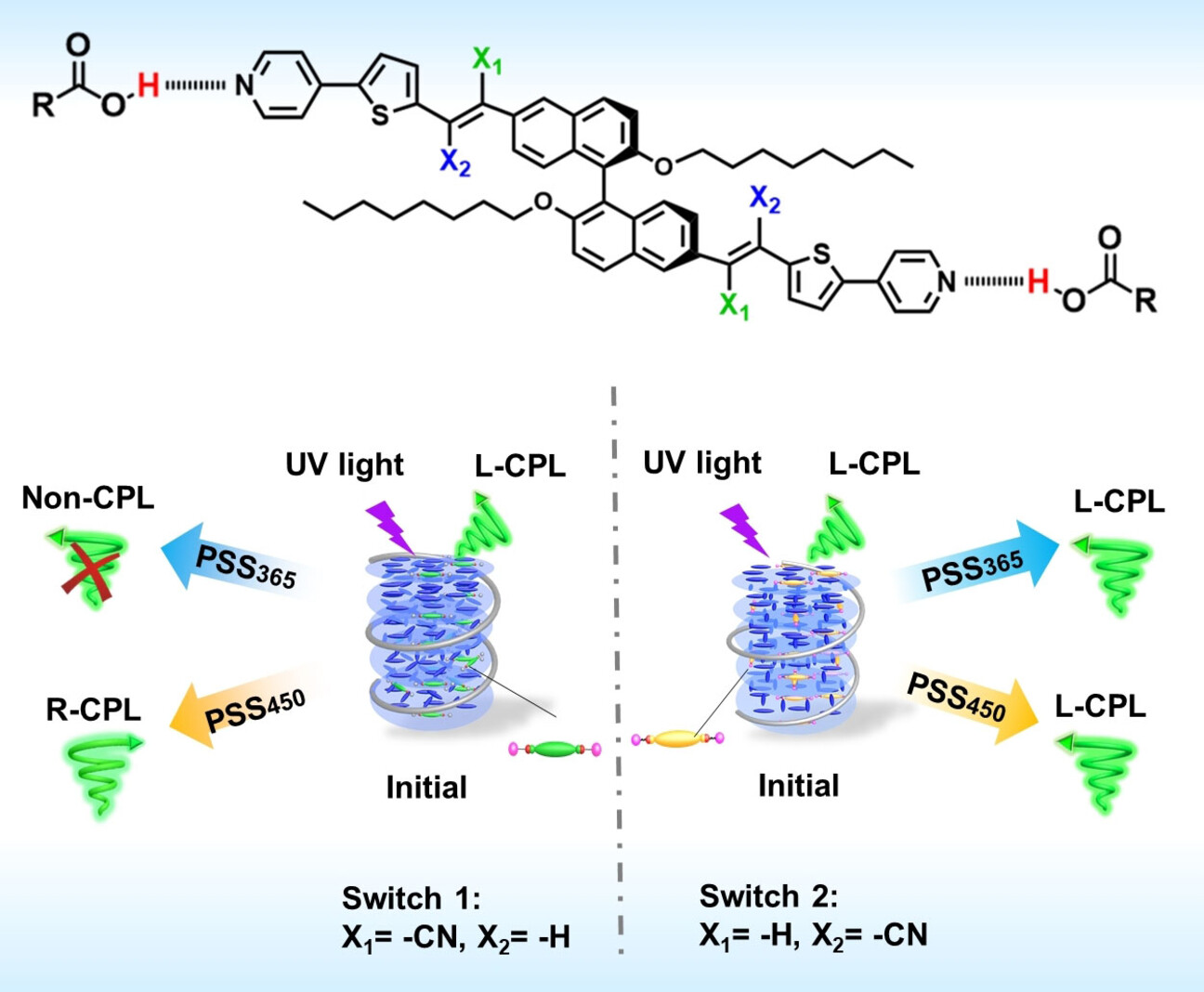
Phototuning the turning-off and the polarization inversion of circularly polarized luminescence signals is obtained in the corresponding photostationary state of the same helical cholesteric superstructure constructed from the light-driven hydrogen bonded chiral fluorescent molecular switch, which derives from the different conversion ratio of Z/E photoisomerization of the switch upon different light irradiations.
Organocatalysis | Hot Paper
Brønsted Acid Catalyzed Dearomatization by Intramolecular Hydroalkoxylation/Claisen Rearrangement: Diastereo- and Enantioselective Synthesis of Spirolactams
- Pages: 27164-27170
- First Published: 20 October 2021
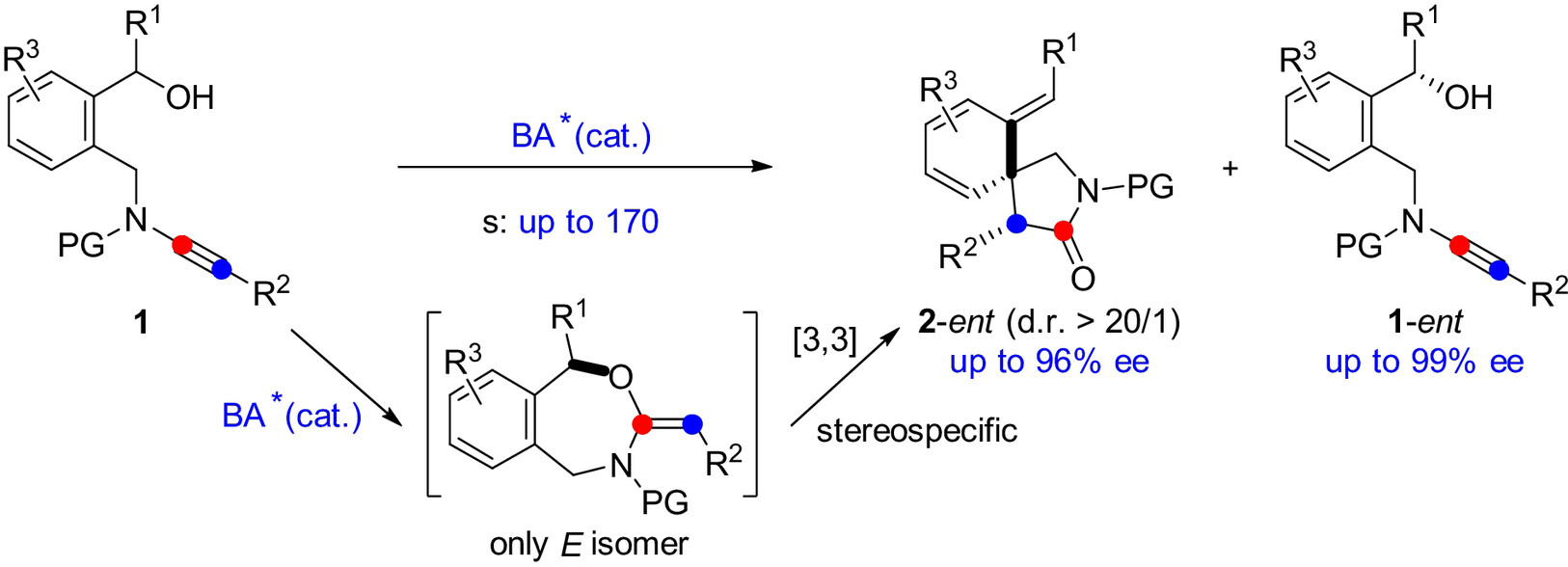
A Brønsted acid catalyzed intramolecular hydroalkoxylation/Claisen rearrangement is disclosed that involves an unexpected dearomatization of nonactivated arenes and heteroaromatic compounds and allows the practical and atom-economic synthesis of various valuable spirolactams. Moreover, the asymmetric version of this tandem cyclization is also achieved via kinetic resolution by chiral phosphoric acid catalysis.
Phosphorescence Energy Transfer
Ultrahigh Supramolecular Cascaded Room-Temperature Phosphorescence Capturing System
- Pages: 27171-27177
- First Published: 26 October 2021

An ultrahigh supramolecular cascaded RTP-capturing system was constructed based on a multivalent supramolecular aggregate using cucurbit[7]uril (CB[7]) and sulfonatocalix[4]arene (SC4AD) in aqueous medium. Energy transfer from G⊂CB[7]@SC4AD to primary (RhB or DBT) and then to secondary energy acceptors (Cy5 or NiB) gives rise to long-range and long-lived photoluminescence, especially NIR delayed emission (675 nm).
Communications
Biocatalysis | Hot Paper
Fluorinated S-Adenosylmethionine as a Reagent for Enzyme-Catalyzed Fluoromethylation
- Pages: 27178-27183
- First Published: 01 October 2021
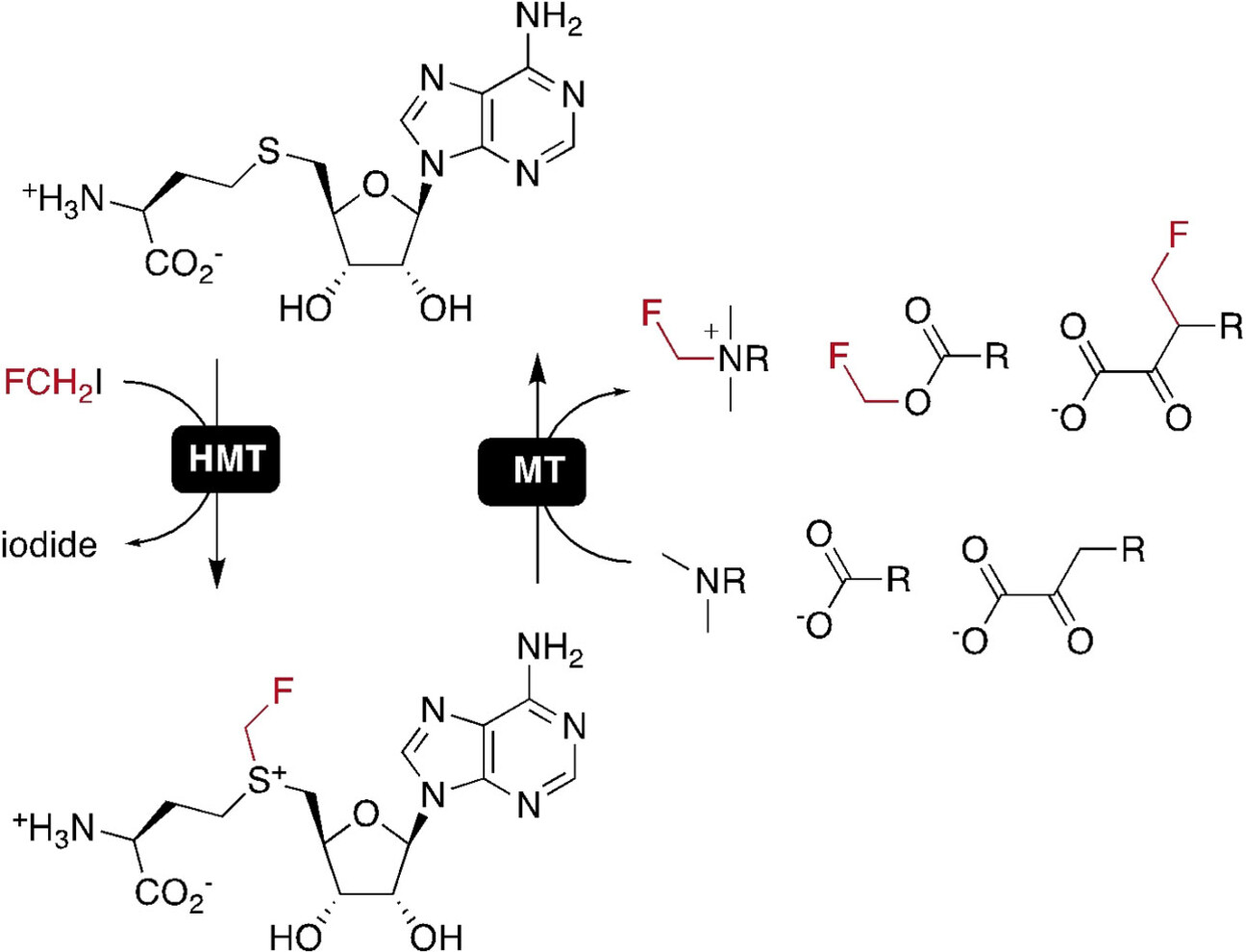
In a biocatalytic approach to the production of fluorinated compounds, halide methyltransferases (HMTs) were found to form fluorinated S-adenosylmethionine (SAM) from S-adenosylhomocysteine and fluoromethyliodide. Although too unstable for isolation, fluorinated SAM was accepted as a substrate by C-, N- and O-specific SAM-dependent methyltransferases (MTs) to enable the fluoromethylation of small molecules (see scheme).
Coordination Chemistry | Hot Paper
A Molecular Compound for Highly Selective Purification of Ethylene
- Pages: 27184-27188
- First Published: 20 October 2021
Enzyme Catalysis | Hot Paper
Enzyme Catalysis in Non-Native Environment with Unnatural Selectivity Using Polymeric Nanoreactors
- Pages: 27189-27194
- First Published: 12 September 2021
Luminescence | Hot Paper
Influence of Isomerism on Radioluminescence of Purely Organic Phosphorescence Scintillators
- Pages: 27195-27200
- First Published: 17 September 2021
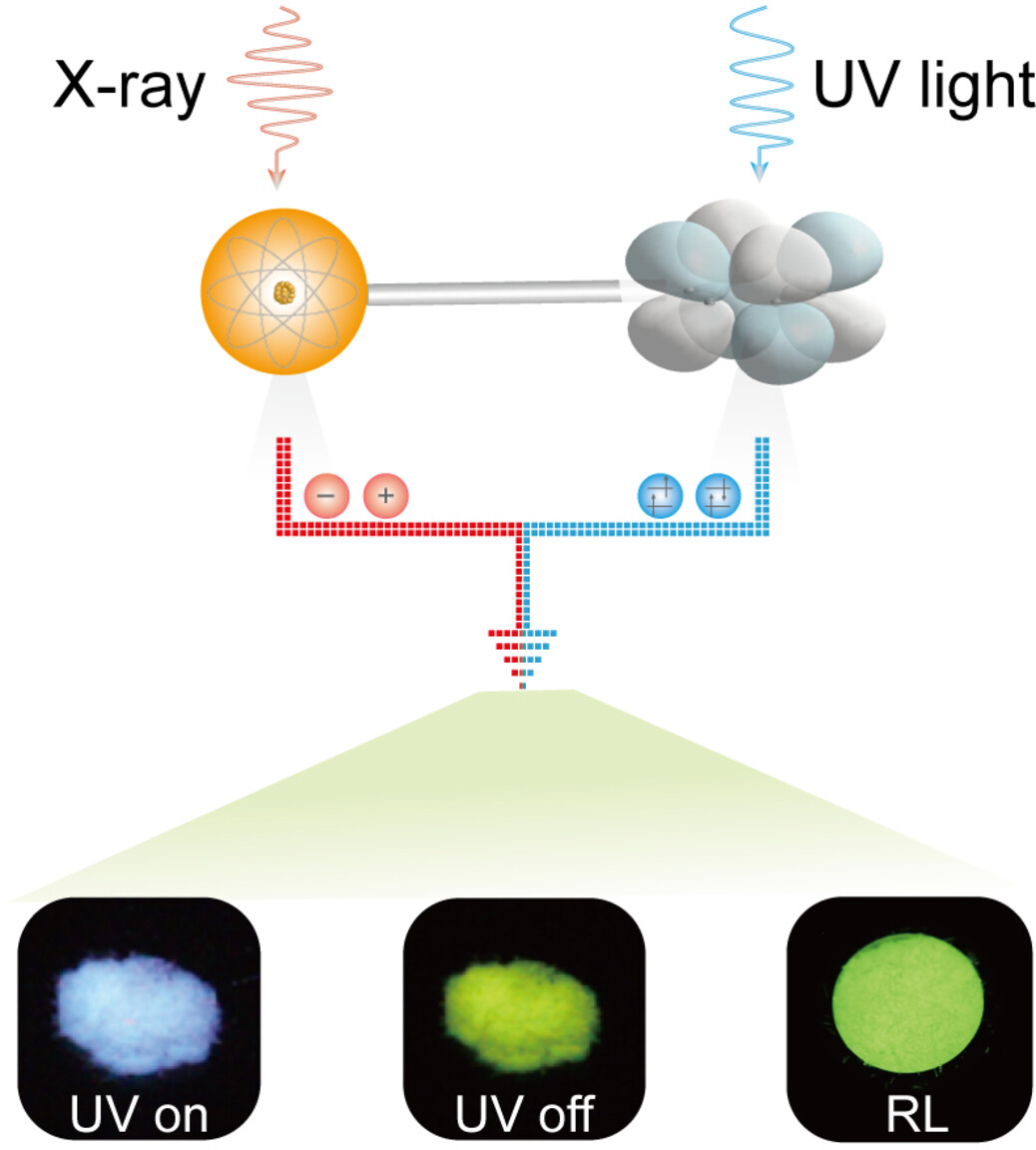
We present an isomerism strategy to study the effect of molecular structures on radioluminescence. Under UV-light excitation, all isomers showed bright phosphorescence with an efficiency of up to 22.8 %. Unexpectedly, both m-BA and p-BA scintillators showed bright luminescence under X-ray irradiation, which was ascribed to both excellent electrical conductivity and efficient suppression of non-radiative decay.
Photocatalysis | Hot Paper
Direct, Site-Selective and Redox-Neutral α-C−H Bond Functionalization of Tetrahydrofurans via Quantum Dots Photocatalysis
- Pages: 27201-27205
- First Published: 18 September 2021

As one of the most ubiquitous bulk reagents available, THF is activated by visible light irradiation of quantum dots in a direct, site-selective and redox-neutral manner. The resultant α-oxyalkyl radicals, generated from α-C−H of THF on the surface of QD, enable either coupling with the α-amino radical of amines, or addition to chromones and terminal alkynes.
Stabilized Nitrenes | Hot Paper
Stabilization of Reactive Nitrene by Silylenes without Using a Reducing Metal
- Pages: 27206-27211
- First Published: 21 September 2021
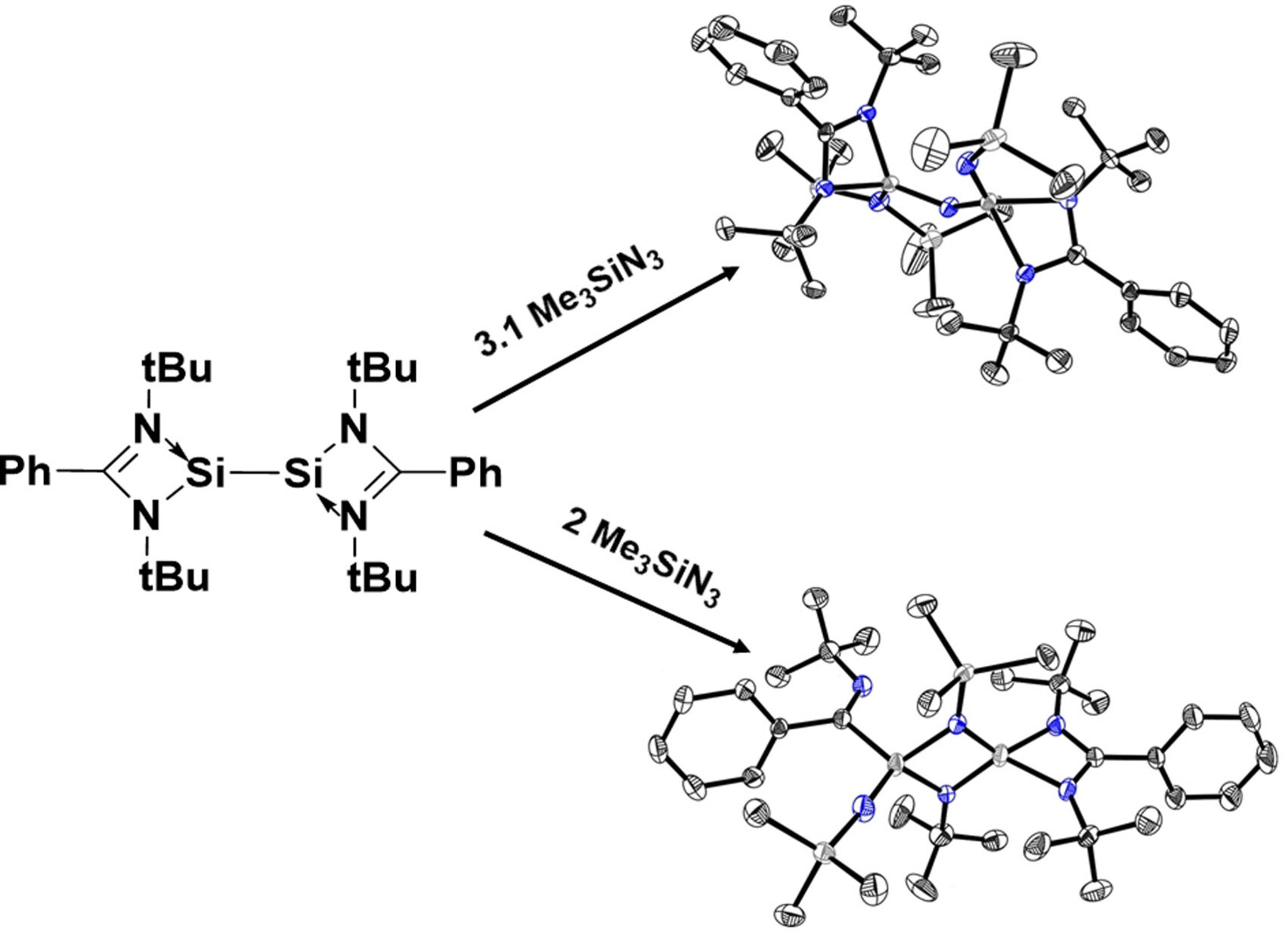
The uncharged univalent and reactive nitrene is captured and stabilized by silylenes. Two nitrene compounds are synthesized and fully characterized. The nitrene character was established by X-ray analysis, first-principles electronic structure studies using density functional theory, and natural bond orbital-based bonding analysis.
Conjugated Polymers
3,4,5-Trimethoxy Substitution on an N-DMBI Dopant with New N-Type Polymers: Polymer-Dopant Matching for Improved Conductivity-Seebeck Coefficient Relationship
- Pages: 27212-27219
- First Published: 25 October 2021
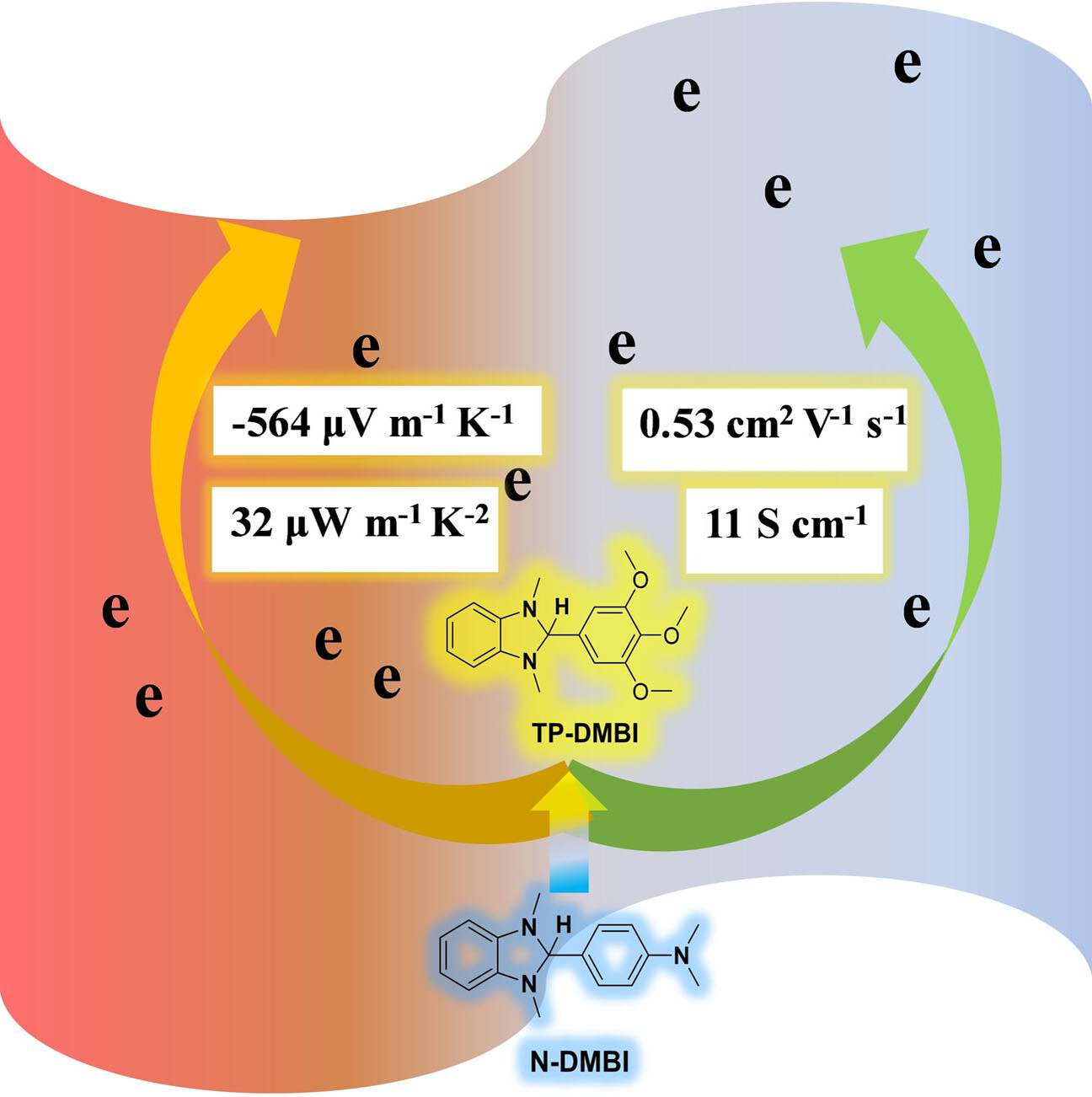
Two n-type conjugated polymers with different backbones and a n-type dopant 1,3-dimethyl-2-(3,4,5-trimethoxyphenyl)-2,3-dihydro-1H-benzo[d]imidazole (TP-DMBI) are synthesized, and electron mobility of 0.53 cm2 V−1 S−1, electrical conductivity of 11 S cm−1 and power factor 32 μW m−1 K−2 for n-type organic thermoelectrics are achieved by TP-DMBI doped films, which out-perform N-DMBI doped films.
Organometallics | Hot Paper
Probing Redox Non-Innocence in Iron–Carbene Complexes {Fe=C(H)Ar}10–11 by 1,2H and 13C Pulse Electron Paramagnetic Resonance
- Pages: 27220-27224
- First Published: 25 October 2021

Presented herein are detailed 1/2H and 13C pulse EPR and DFT investigations of an S=1/2 terminal iron–carbene species. These studies reveal substantial spin density localized at the carbene-bound Fe center, in contrast with what has been reported to date for radical metal–carbenoid species. The {Fe=C(H)Ar}11 complex serves as a well-defined reference compound for comparison to data reported for in situ trapped intermediates.
Heterocycles | Hot Paper
Precatalyst-Enabled Selectivity: Enantioselective NiH-Catalyzed anti-Hydrometalative Cyclization of Alkynones to Endo- and Heterocyclic Allylic Alcohols
- Pages: 27225-27229
- First Published: 09 September 2021

An unprecedented NiH-catalyzed enantio-, regio-, and anti-selective intramolecular coupling of alkynones to construct O-, N-, S-containing endocyclic allylic alcohols was developed. The choice of metal precursors plays a key role in tuning the regio- and enantio-selectivity. This study offers a new anti-hydrocyclization mode for enantioselective hydrofunctionalization of alkynes.
Reaction Mechanisms
Experimental Observation of Hydrocarbon Growth by Resonance-Stabilized Radical–Radical Chain Reaction
- Pages: 27230-27235
- First Published: 03 October 2021
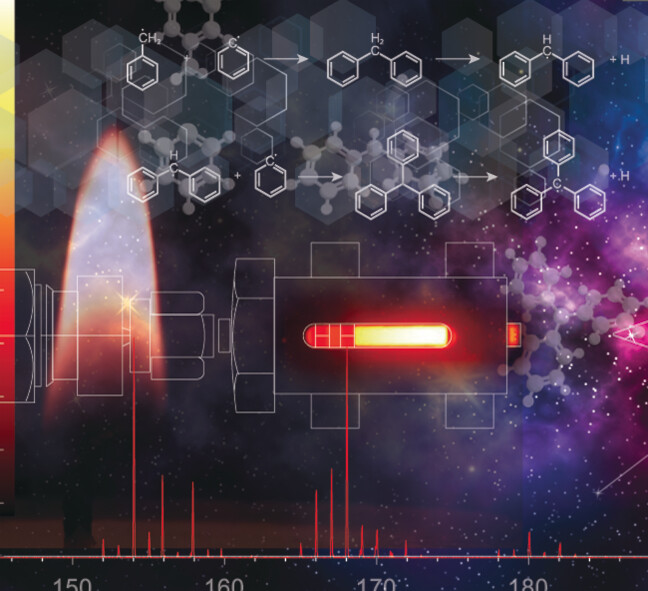
Radical–radical chain reactions may contribute to rapid growth of polycyclic aromatic hydrocarbons in combustion and astrochemical environments. Phenyl and benzyl radicals were experimentally observed to complete this chain reaction, producing diphenylmethyl and triphenylmethyl radicals by prompt H-atom loss (see scheme). This observation confirms the plausibility of such chain reactions at high temperature and low pressure.
Natural Products
Synthesis of (±)-Setigerumine I: Biosynthetic Origins of the Elusive Racemic Papaveraceae Isoxazolidine Alkaloids
- Pages: 27236-27240
- First Published: 27 October 2021
Asymmetric Catalysis
Cobalt-Catalysed Asymmetric Addition and Alkylation of Secondary Phosphine Oxides for the Synthesis of P-Stereogenic Compounds
- Pages: 27241-27246
- First Published: 05 November 2021

The catalytic asymmetric synthesis of P-chiral phosphorus compounds is an important way to construct P-chiral ligands. Herein, we report a new strategy that adopts the pyridinyl moiety as the coordinating group in the cobalt-catalysed asymmetric nucleophilic addition/alkylation of secondary phosphine oxides (SPOs). A series of tertiary phosphine oxides (TPOs) were generated with up to 99 % yield and 99.5 % ee, and with broad functional-group tolerance.
Phosphine Chemistry
Palladium/Xiao-Phos-Catalyzed Kinetic Resolution of sec-Phosphine Oxides by P-Benzylation
- Pages: 27247-27252
- First Published: 21 October 2021
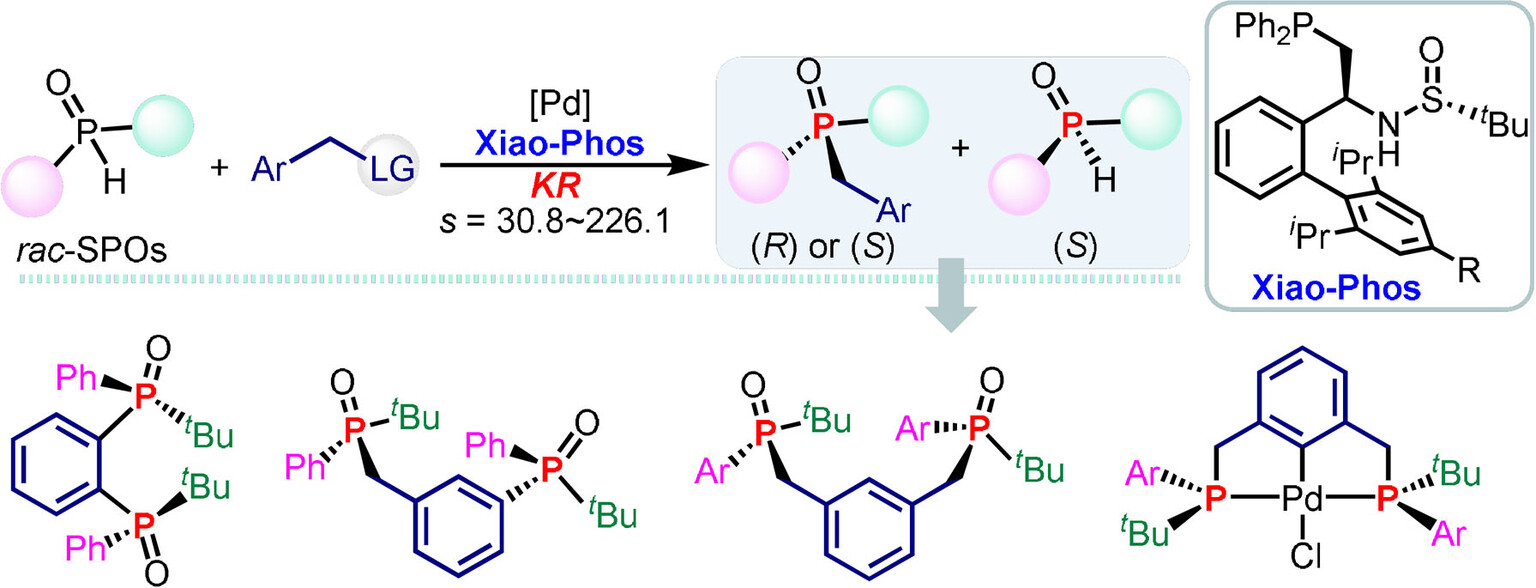
A kinetic resolution of rac-secondary phosphine oxides via the enantioselective P-benzylation process catalyzed by the palladium/Xiao-Phos was designed. Both, tert- and sec-phosphine oxides were delivered in good yield and excellent enantiopurity (selectivity factor up to 226.1). The synthetic utilities are further demonstrated by the facile preparation of several P-chiral compounds, precursors of bidentate ligands, and transition metal complexes.
Organic Superbases | Hot Paper
Stable Singlet Carbenes as Organic Superbases
- Pages: 27253-27257
- First Published: 02 November 2021
Photocatalysis
Precise Spatial-Designed Metal-Organic-Framework Nanosheets for Efficient Energy Transfer and Photocatalysis
- Pages: 27258-27263
- First Published: 29 October 2021

Metal-organic frameworks (MOFs), especially MOF nanosheets (NS), are very good candidates for photocatalysis. In this work, two types of donor–acceptor MOF NSs were prepared, including an acceptor-on-donor NS and a donor-on-acceptor NS. It was found that the acceptor-on-donor NS type has very good performance even with fewer catalytic centres. This may help future research to design photocatalysts.
Supramolecular Chemistry
Supramolecular Nanopatterns of Molecular Spoked Wheels with Orthogonal Pillars: The Observation of a Fullerene Haze
- Pages: 27264-27270
- First Published: 21 October 2021

A modular synthetic approach paves the way to nanoscale platform molecules for supramolecular graphite surface patterns at the solid–liquid interface. While a perylene dye bound at the end of the pillar remains fixed above the molecule center and points into solution, a fullerene ester bound at the same position performs a tumbling motion that translates as a “haze” in the otherwise submolecularly resolved images.
Heterocycles
Electrochemical Oxo-Fluorosulfonylation of Alkynes under Air: Facile Access to β-Keto Sulfonyl Fluorides
- Pages: 27271-27276
- First Published: 02 November 2021

The generation of FSO2 radicals under electrochemical conditions is reported. Various sulfonyl fluorides and heterocycles, including a novel oxathiazole dioxide heterocycle, can be obtained in good to excellent yields. Some β-keto sulfonyl fluorides and derivatives showed potent activities against Bursaphelenchus xylophilus and Colletotrichum gloeosporioides.
Structural Biology | Hot Paper
Structural Basis for Inhibition of ROS-Producing Respiratory Complex I by NADH-OH
- Pages: 27277-27281
- First Published: 06 October 2021
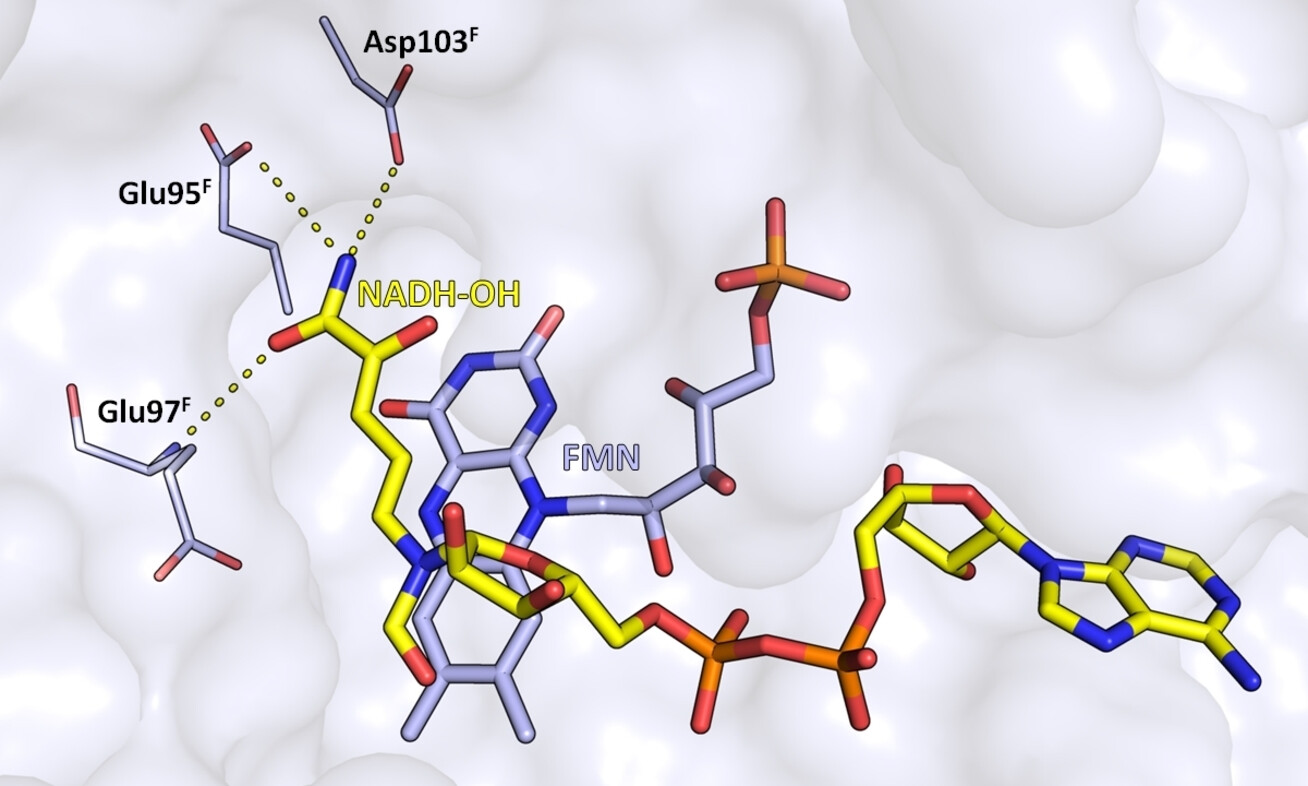
The novel inhibitor NADH-OH binds with high affinity to respiratory complex I, thereby blocking NADH oxidation and the production of reactive oxygen species. The tight interaction is mediated by residues conserved in complex I but lacking in other enzymes containing a Rossmann-fold. Accordingly, it is a lead structure for the development of new drugs for fighting oxygen stress.
Single-Molecule Magnets | Hot Paper
Magnetization Dynamics on Isotope-Isomorphic Holmium Single-Molecule Magnets
- Pages: 27282-27287
- First Published: 20 October 2021
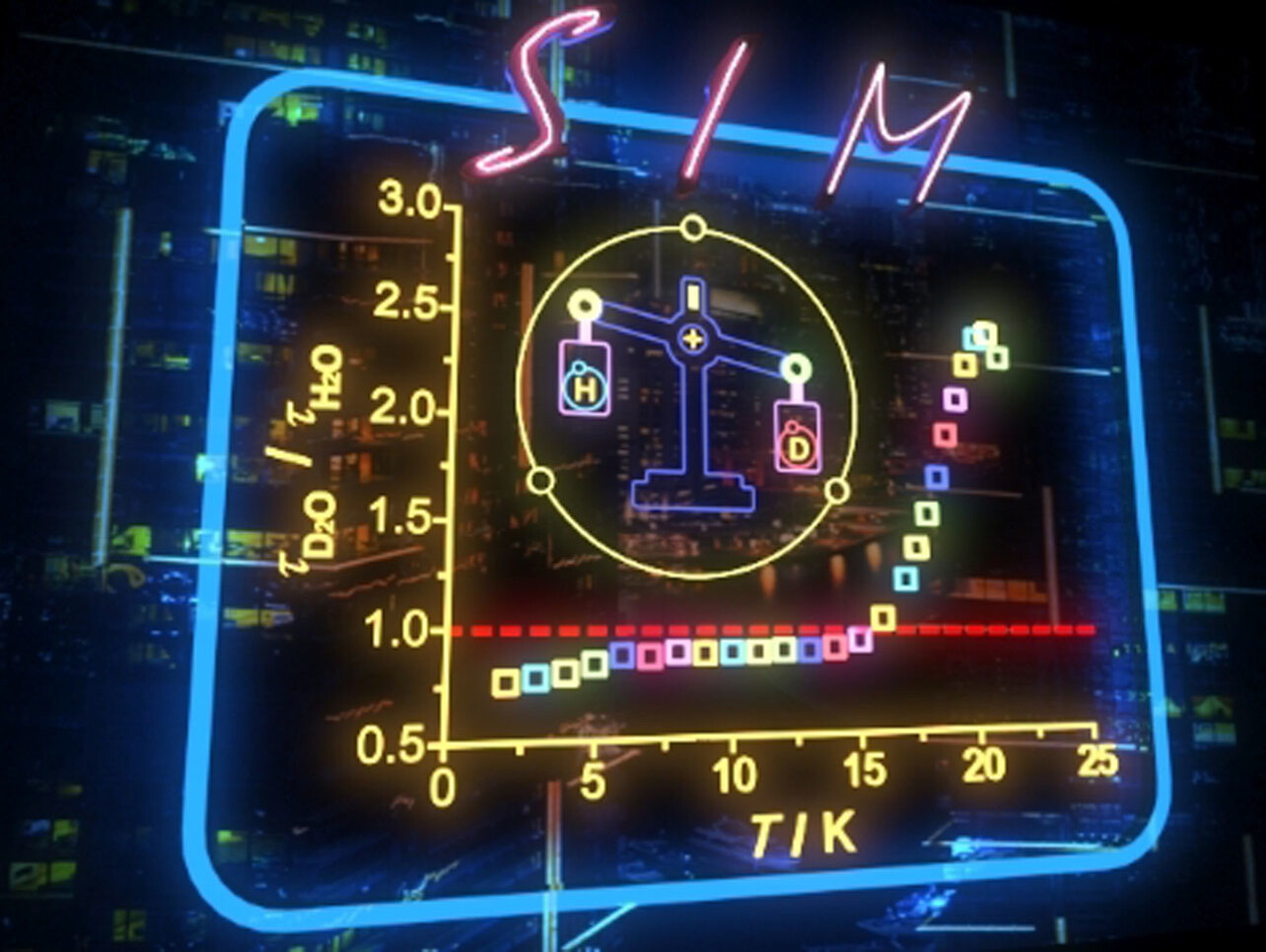
We reported the nuclear-spin driven magnetization dynamics involving both metal ion and the ligand, for first time, in two HoIII isomorphic single-molecule magnets, where the behavior is originated from the super-hyperfine interaction related to the difference in nuclear spin number of protium (I=1/2) and deuterium (I=1).
Asymmetric Catalysis
Enantioselective Palladium-Catalyzed Hydrophosphinylation of Allenes with Phosphine Oxides: Access to Chiral Allylic Phosphine Oxides
- Pages: 27288-27292
- First Published: 28 September 2021

A highly efficient, versatile and atom-economic protocol to chiral allylic phosphine oxides is demonstrated via palladium-catalyzed asymmetric hydrophosphinylation of allenes with phosphine oxides. A family of chiral allylic phosphine oxides with a diverse range of functional groups were obtained in high yield (up to 99 %) and enantioselectivities (up to 99 % ee).
Cross-Coupling | Hot Paper
The Formal Cross-Coupling of Amines and Carboxylic Acids to Form sp3–sp3 Carbon–Carbon Bonds
- Pages: 27293-27298
- First Published: 20 October 2021

An amine–carboxylic acid C−C coupling would be a valuable addition to the synthetic toolbox of carbon–carbon bond-forming reactions. Using miniaturized high-throughput experimentation, we have developed the first amine–acid cross-coupling to form C(sp3)−C(sp3) bonds based on preactivation of the building blocks and nickel catalysis.
Solar Cells | Hot Paper
Combined Precursor Engineering and Grain Anchoring Leading to MA-Free, Phase-Pure, and Stable α-Formamidinium Lead Iodide Perovskites for Efficient Solar Cells
- Pages: 27299-27306
- First Published: 29 October 2021
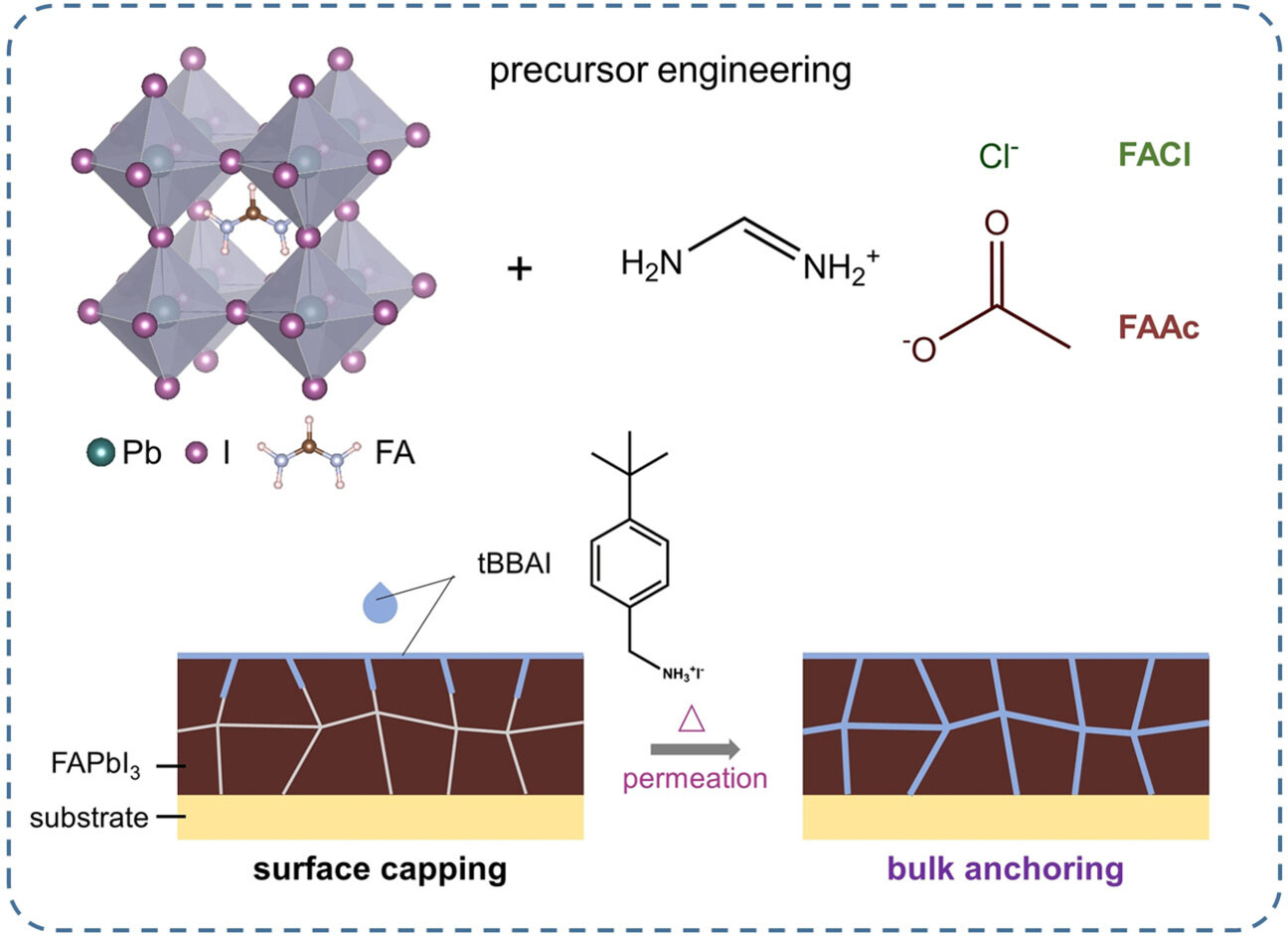
Formamidinium (FA)-based additives in precursor solutions suppressed the formation of the undesired δ phase during the crystallization of FAPbI3 perovskites, and heat-induced permeation of 4-tert-butylbenzylammonium iodide (tBBAI) into inner perovskite grains stabilized the α structure. Solar cells assembled from this material exhibited improved power conversion efficiency and stability.
Asymmetric Reductive Amination | Hot Paper
An Iridium Catalytic System Compatible with Inorganic and Organic Nitrogen Sources for Dual Asymmetric Reductive Amination Reactions
- Pages: 27307-27311
- First Published: 26 October 2021

Two successive asymmetric reductive aminations (ARAs) have been merged into one reaction system to generate enantiopure C2-symmetric secondary amines. The iridium-phosphoramidite complex successfully manages the dual ARAs by using two distinctly different types of amine sources: an inorganic ammonium salt and an organic primary amine.
Nanosheets
Ruddlesden–Popper Hybrid Lead Bromide Perovskite Nanosheets of Phase Pure n=2: Stabilized Colloids Stored in the Solid State
- Pages: 27312-27317
- First Published: 21 October 2021
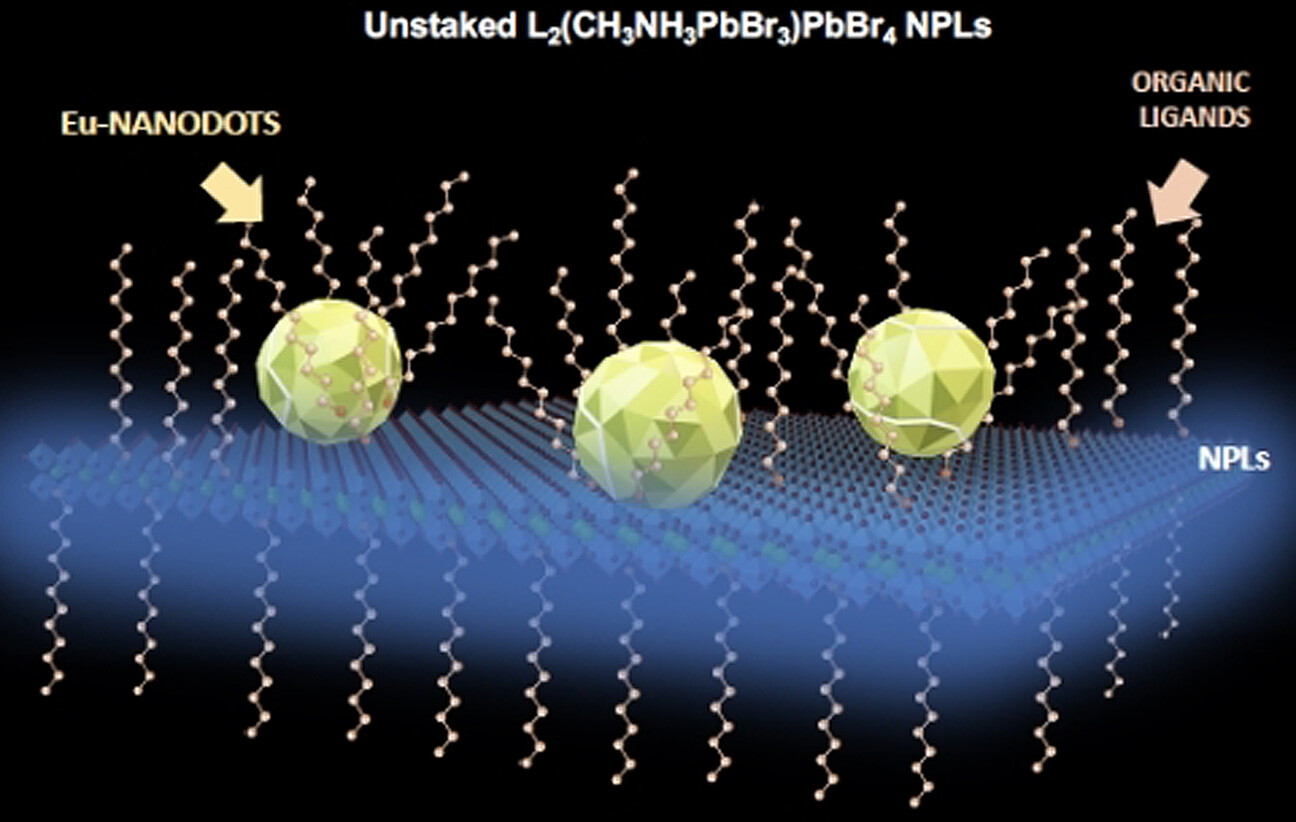
Quantum confined nanosheets (NSs) of 3D perovskites with a thickness of two lead halide layers can be prepared by using the dodecylammonium/tosylate ligand pair. The addition of Eu-nanodots to the colloid prevented the NSs from a structural rearrangement and/or coalescence. Deep blue-emissive colloids were recovered by simply dispersing it in toluene.
Fluorination
Fluorination Triggers Fluoroalkylation: Nucleophilic Perfluoro-tert-butylation with 1,1-Dibromo-2,2-bis(trifluoromethyl)ethylene (DBBF) and CsF
- Pages: 27318-27323
- First Published: 29 October 2021

A new perfluoro-tert-butylation protocol debuts: Consecutive triple fluorinations of 1,1-dibromo-2,2-bis(trifluoromethyl)ethylene (DBBF) generate (CF3)3C− species, which enables efficient nucleophilic perfluoro-tert-butylation of various electrophiles. The C(CF3)3-containing products can be successfully applied in 19F-magnetic resonance imaging.
Single-Atom Catalysts | Hot Paper
Metal-Triazolate-Framework-Derived FeN4Cl1 Single-Atom Catalysts with Hierarchical Porosity for the Oxygen Reduction Reaction
- Pages: 27324-27329
- First Published: 26 October 2021
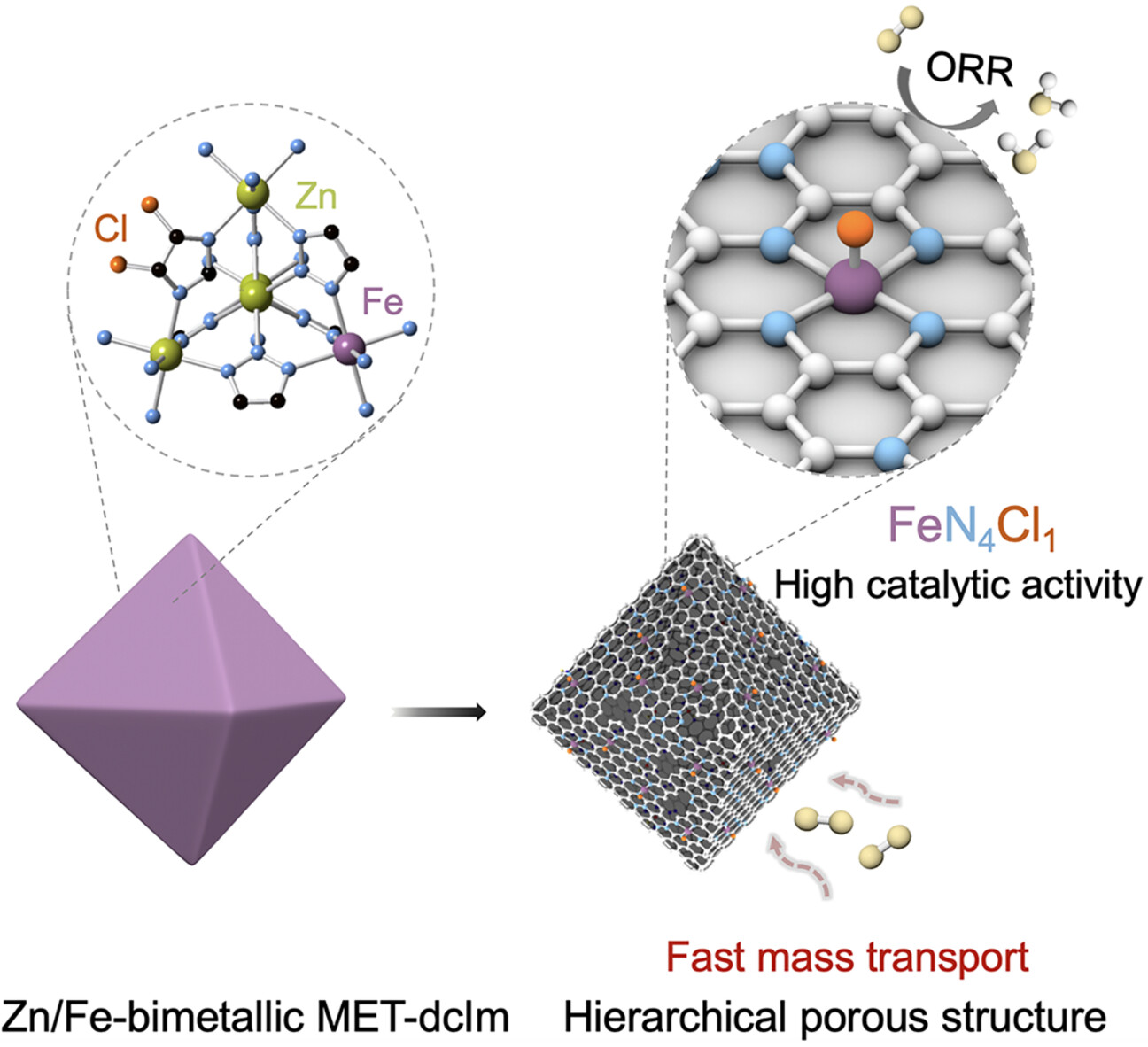
A Zn/Fe-bimetallic metal-triazolate framework (MET) modified with 4,5-dichloroimidazole (dcIm) was used to prepare the Fe single-atom catalyst FeN4Cl1/NC. In the oxygen reduction reaction (ORR), the catalyst offers fast mass transfer and high catalytic activity because of abundant mesopores (pore:volume ratio 0.92), a high Fe loading (2.78 wt %), and defined FeN4Cl1 sites with a distinct electronic structure.




